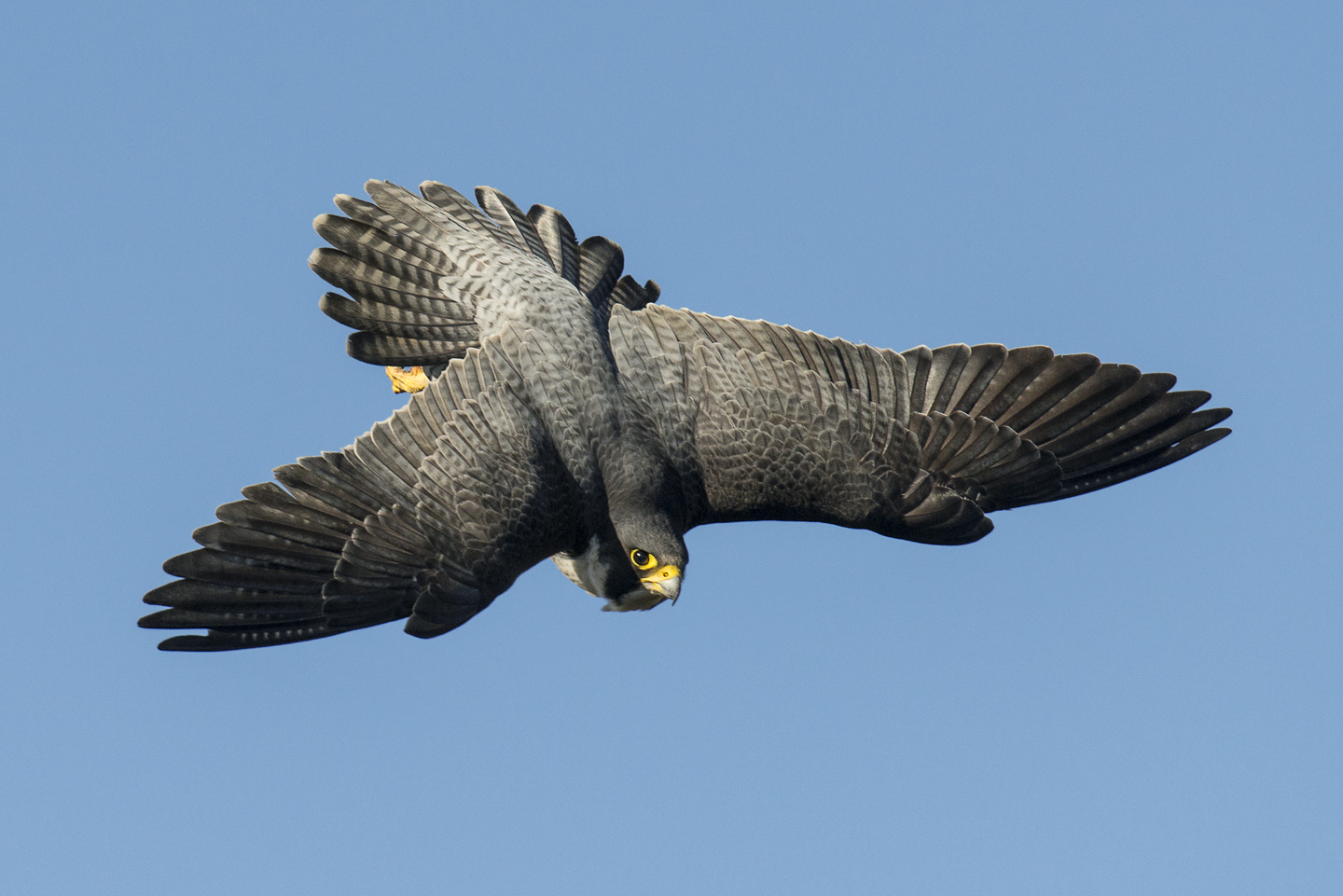
The peregrine falcon. Ruthless killer, graceful aerial acrobat and fastest creature on the planet
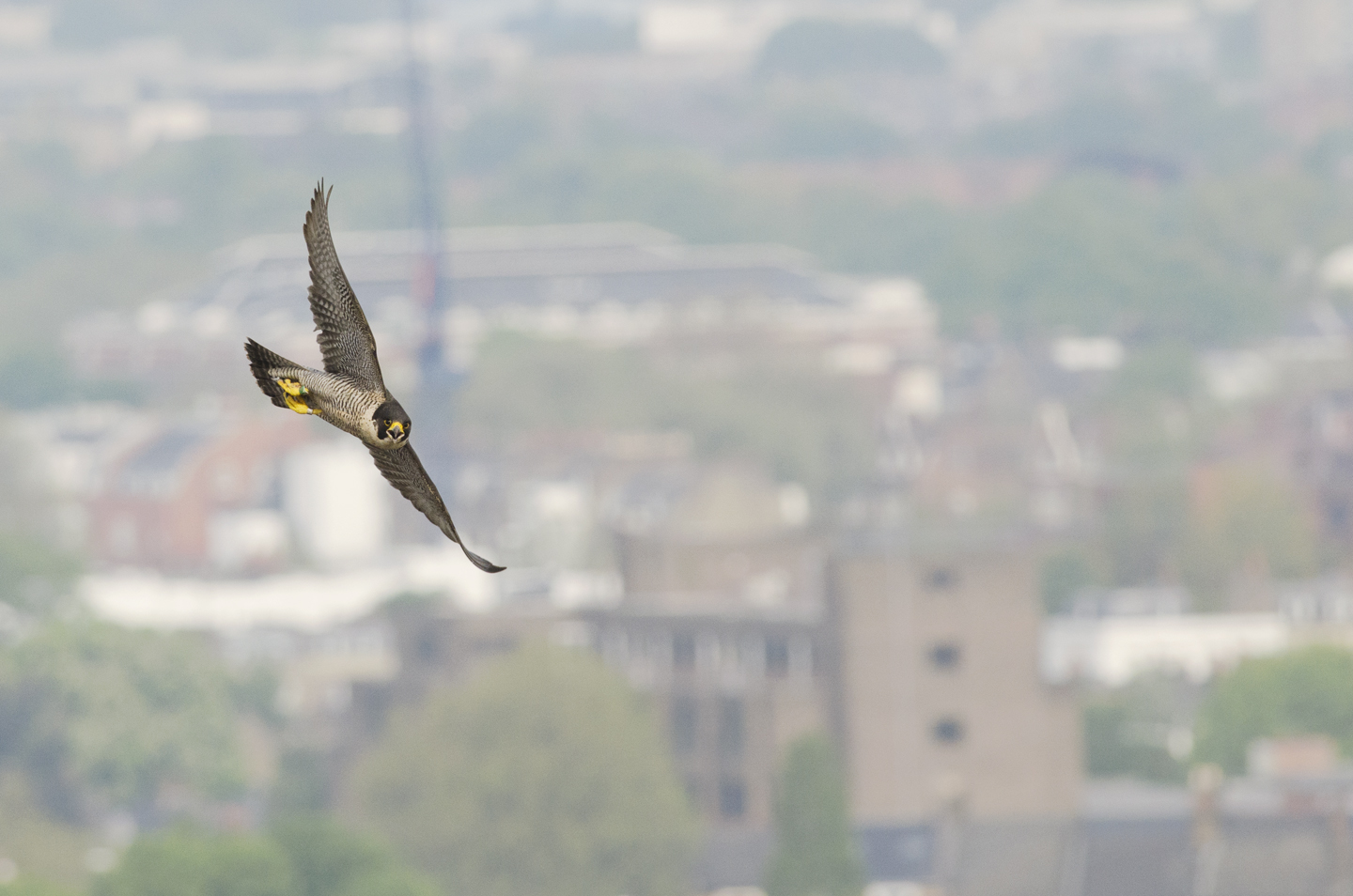
In recent years, these powerful falcons have become one of the UK's greatest urban wildlife success stories
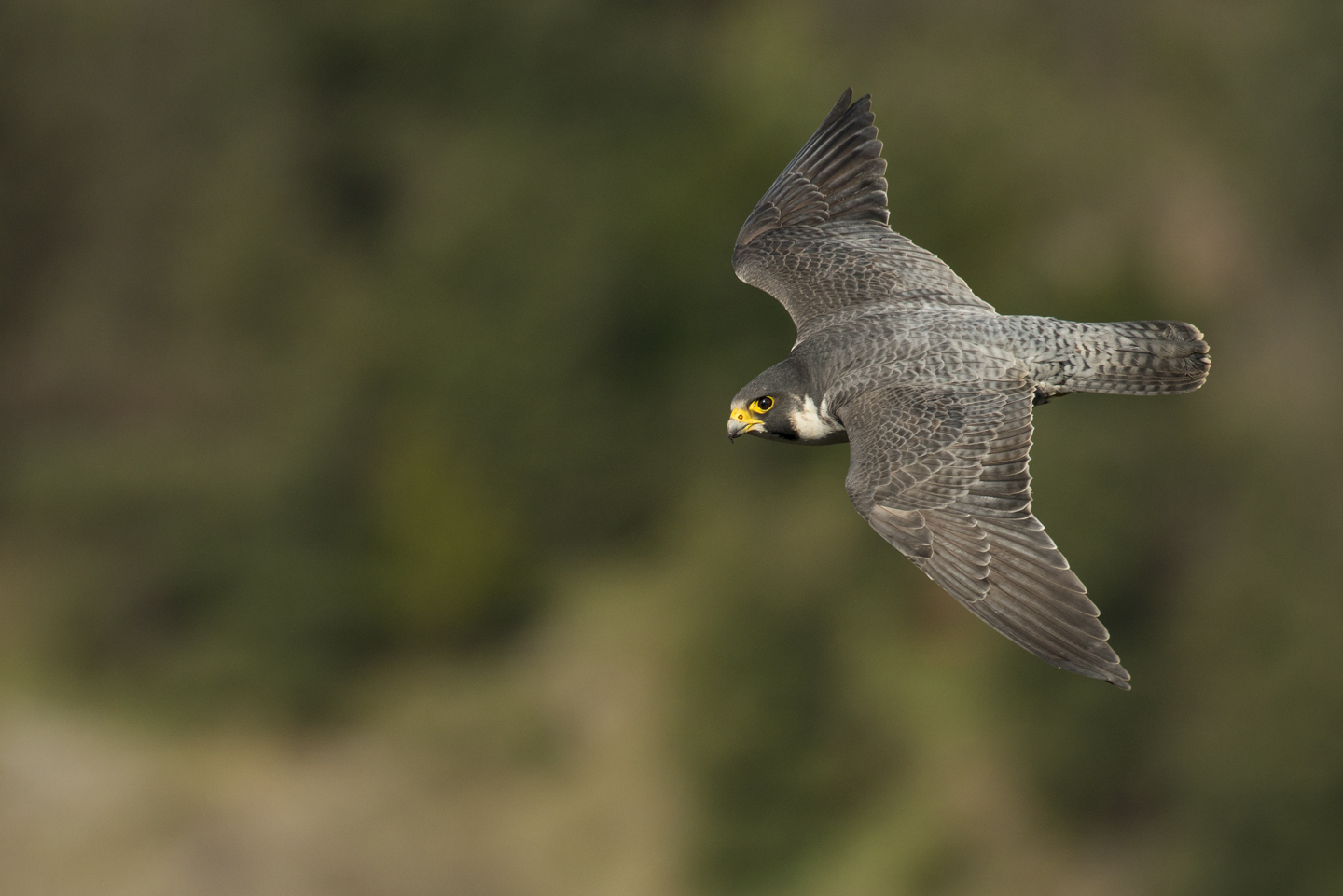
Recovering from under 400 pairs in the 1960s to well over 1500 today, peregrines have made a come-back and are giving us better and closer views than ever before

In the city, where they are less fearful of man, we can even witness dramatic natural behaviour at close quarters like this clash between 2 juvenile siblings
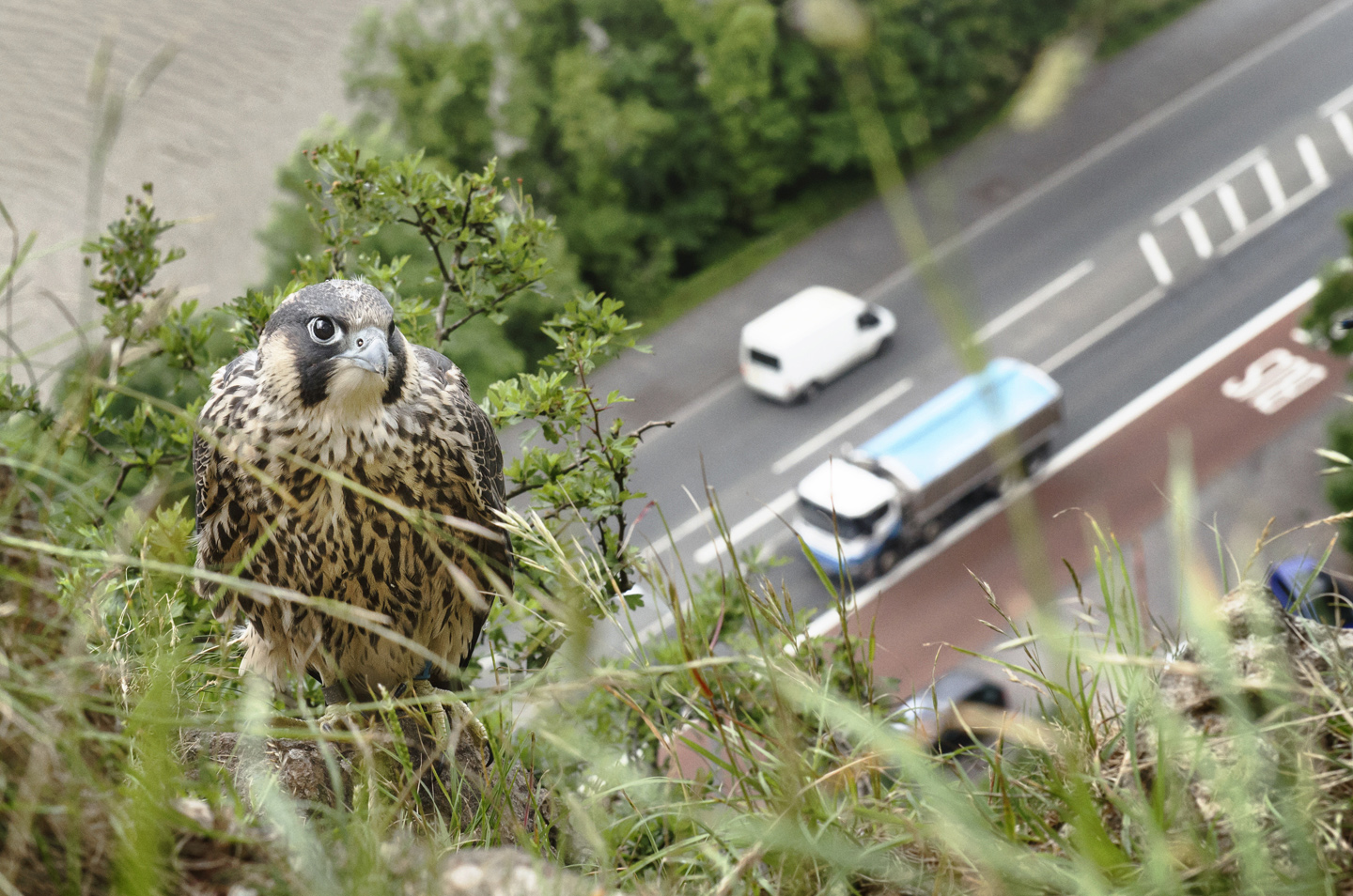
Clumsy fledglings can turn up in unexpected places, like this cliff-top above a busy main road
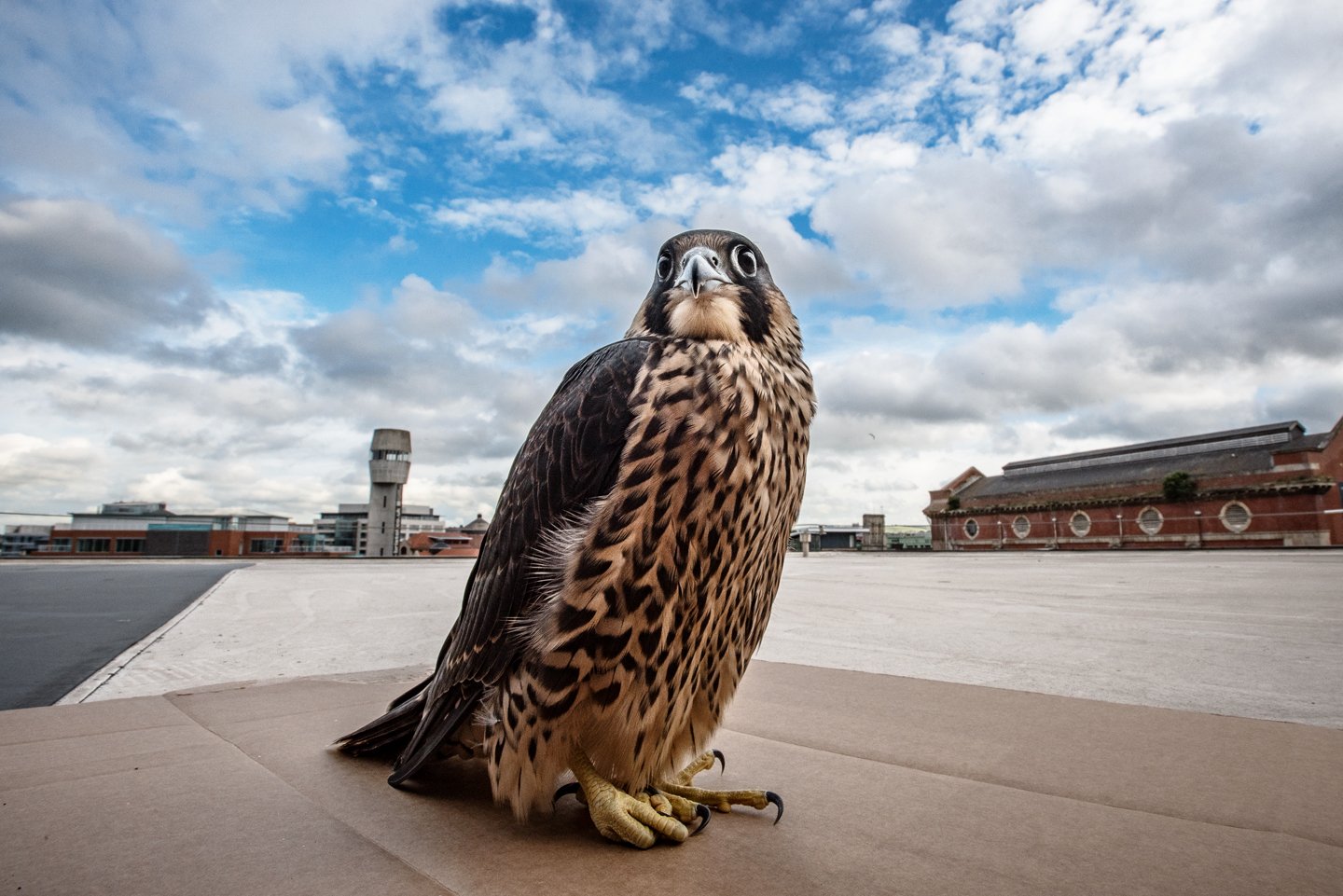
And some become grounded and need help back up to rooftop safety
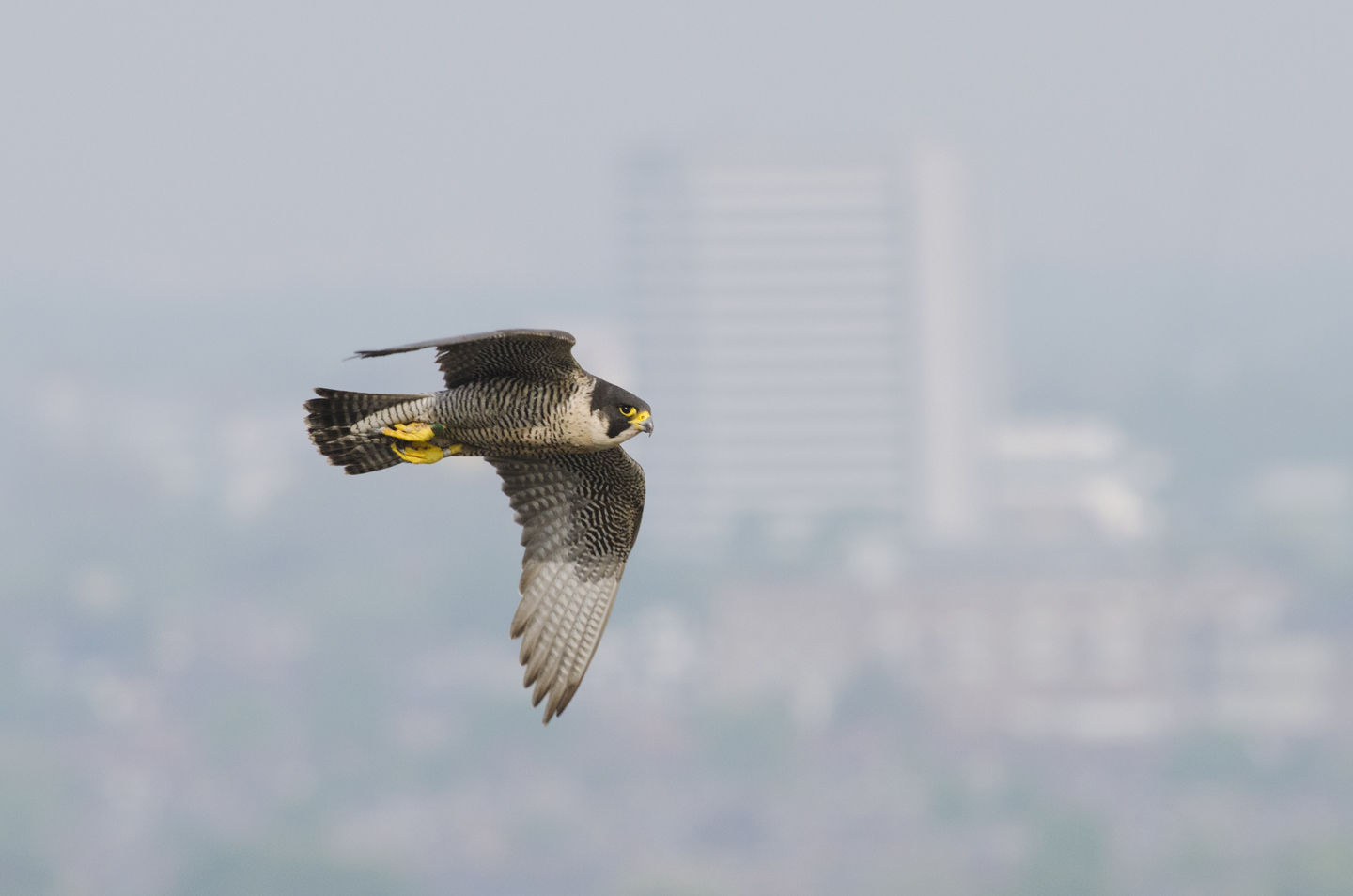
Tall city structures replace crag and cliff and now peregrines are just as comfortable patrolling our urban skies

Young falcons make their first flights and catch their first pigeons in the city - to them it's home and they know no different
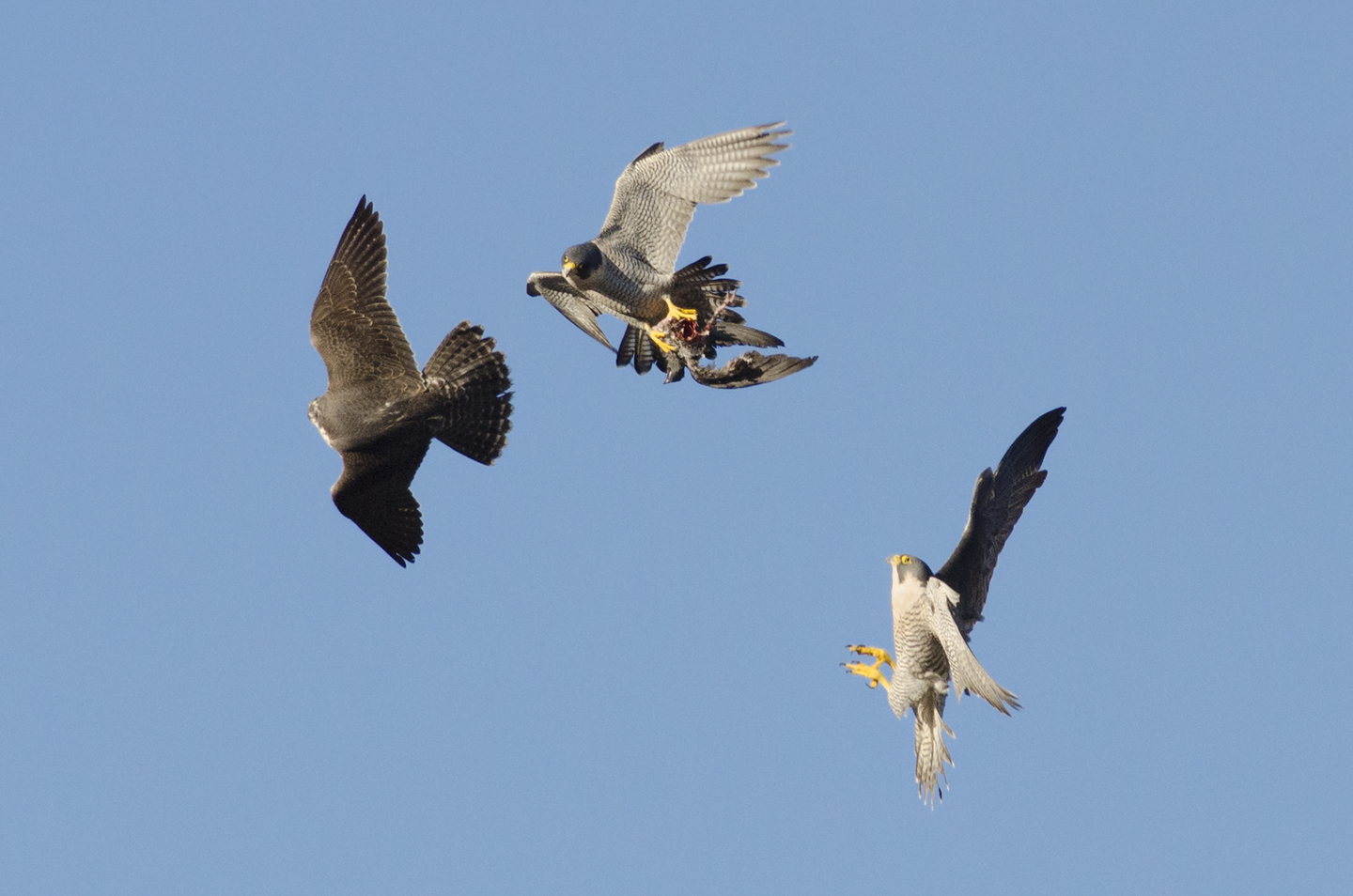
They can develop and learn to hunt in relative safety, where they have a year round supply of feral pigeons to play with

The peregrine, or "wandering" falcon is no longer a nomad, preferring to hold its territory year round, come rain or shine

The year starts with flight displays by the tiercel to impress the female. Flight and ledge displays, prey-transfers and other courtship rituals are important in pair bonding
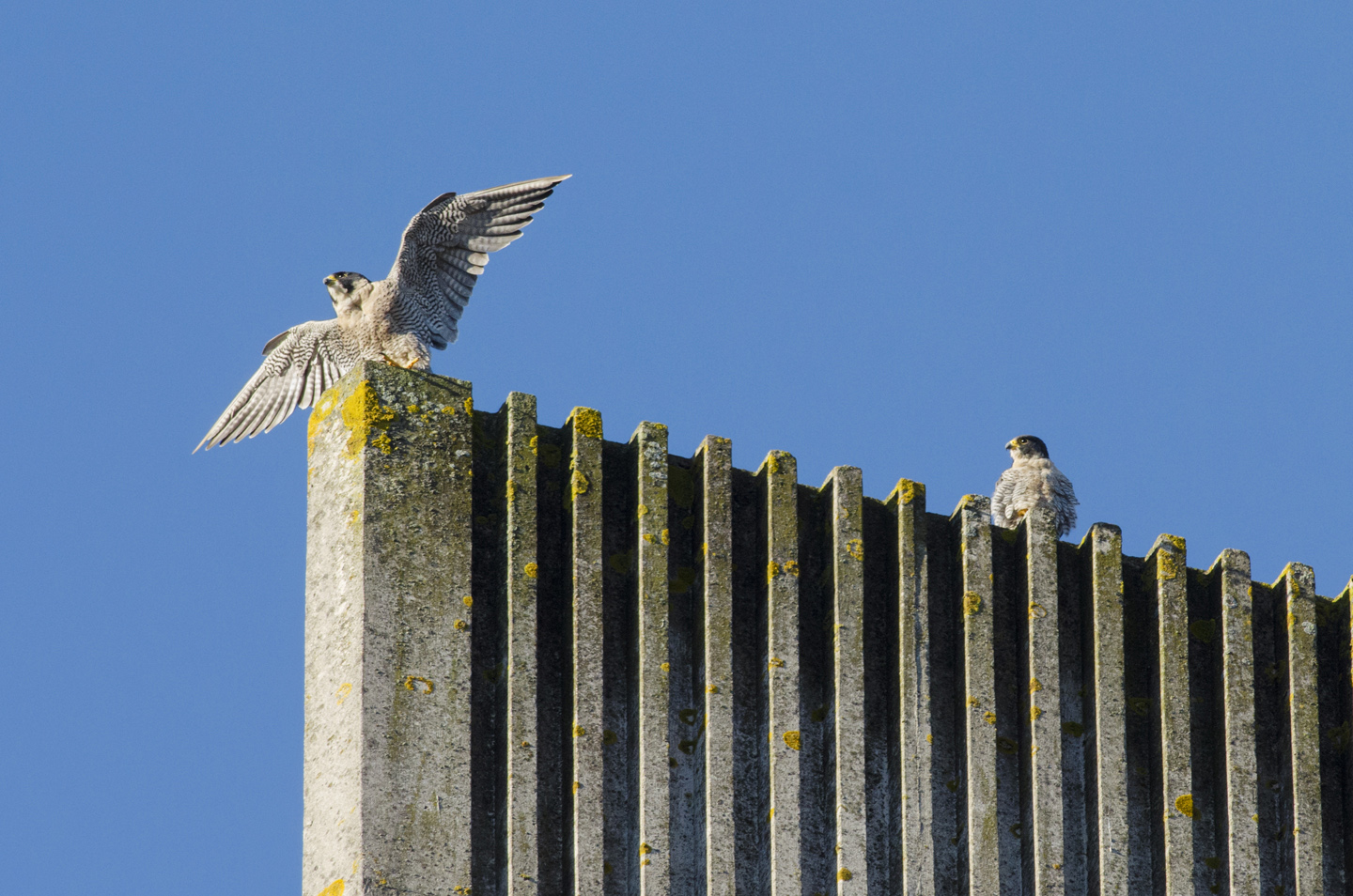
Once the tiercel has proved he is a proficient hunter and can provide for the family, the falcon accepts him and they may stay together for many years
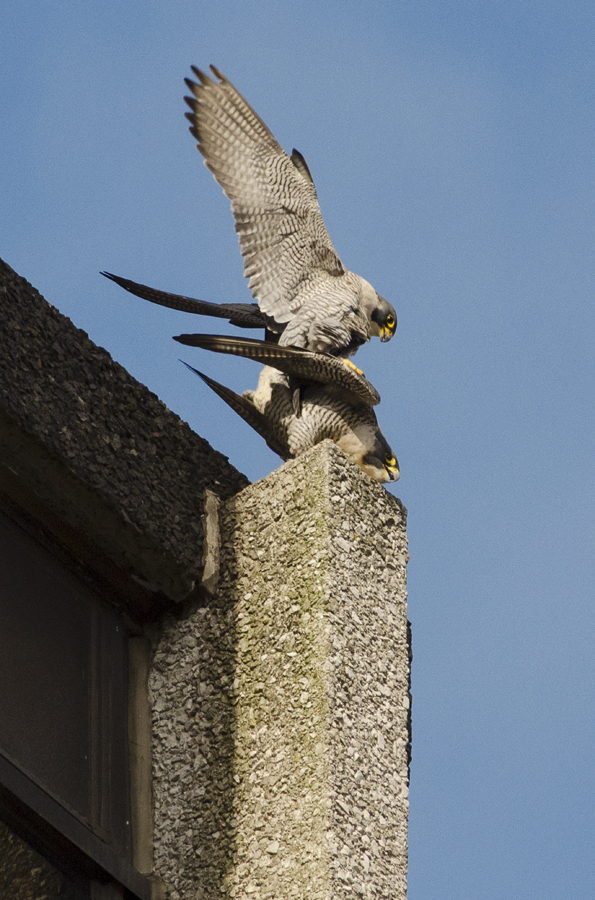
Throughout the Spring they mate many times, partly as pair bonding and usually around their chosen nesting ledge
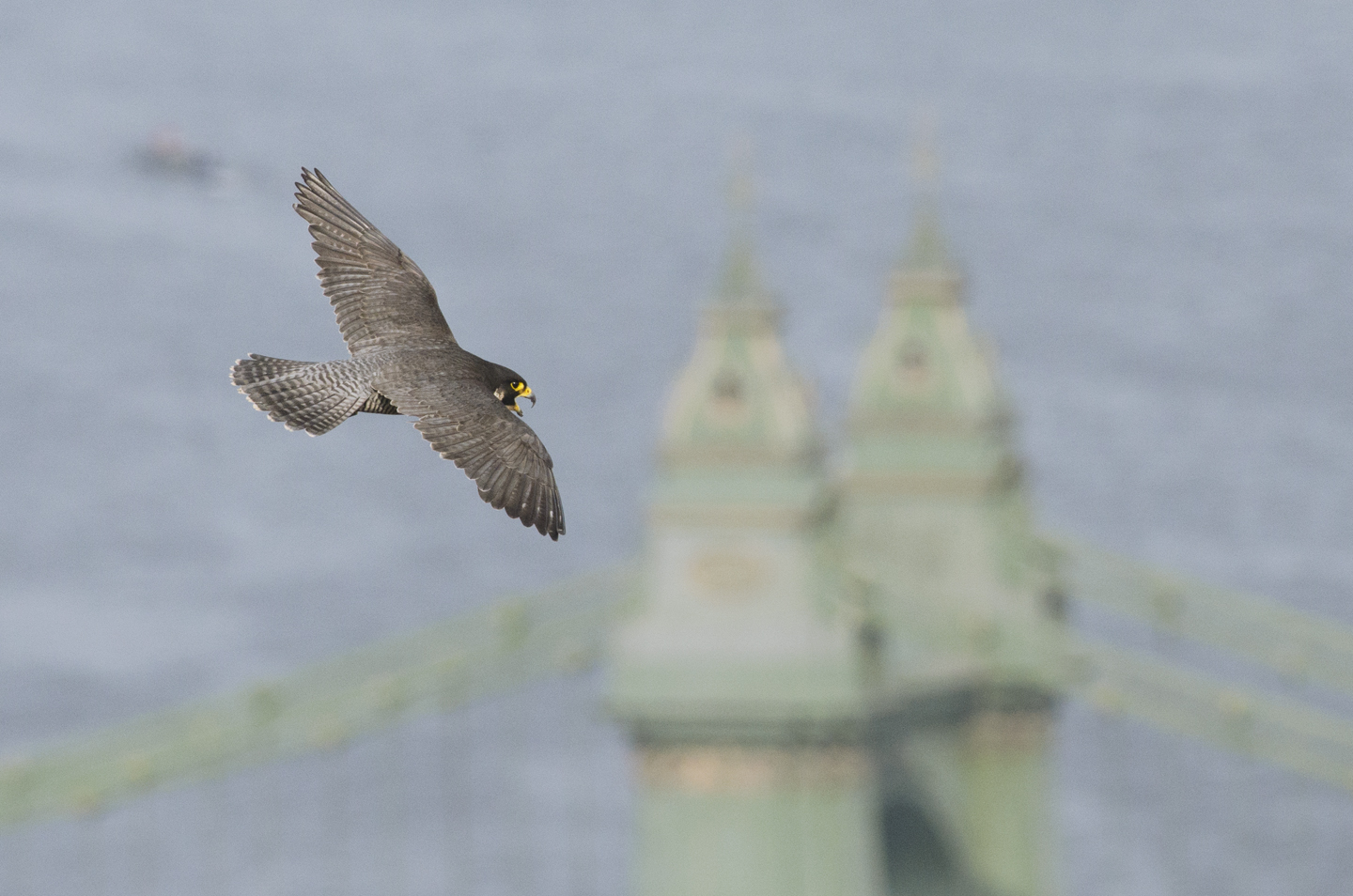
Urban peregrines often nest near rivers as they are natural conduits for birds on the move and it pays to to make the most of this regular source of food
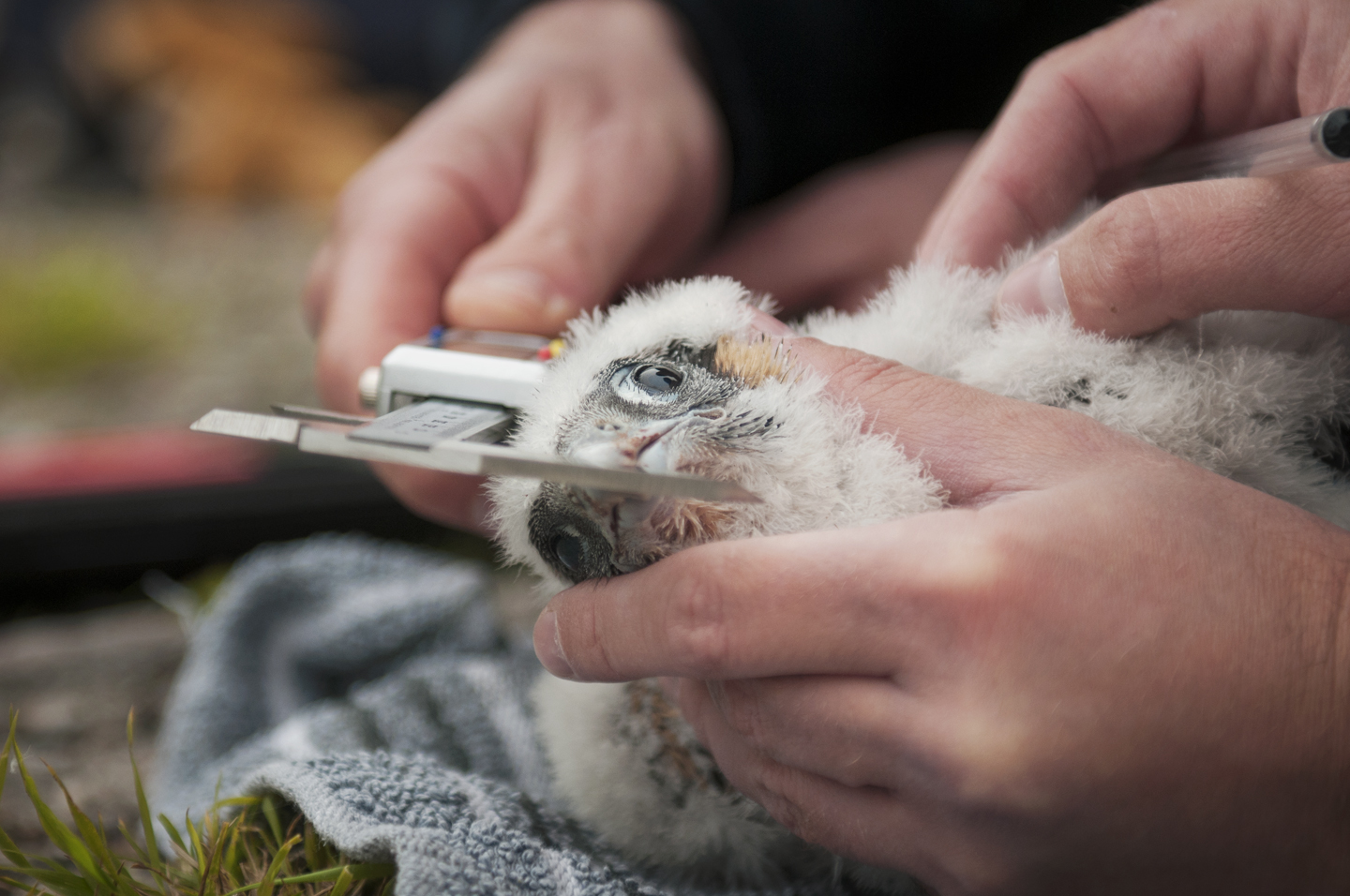
Urban and suburban peregrines can be much more easily monitored than their rural counterparts. The nestlings are ringed at around 3 weeks old
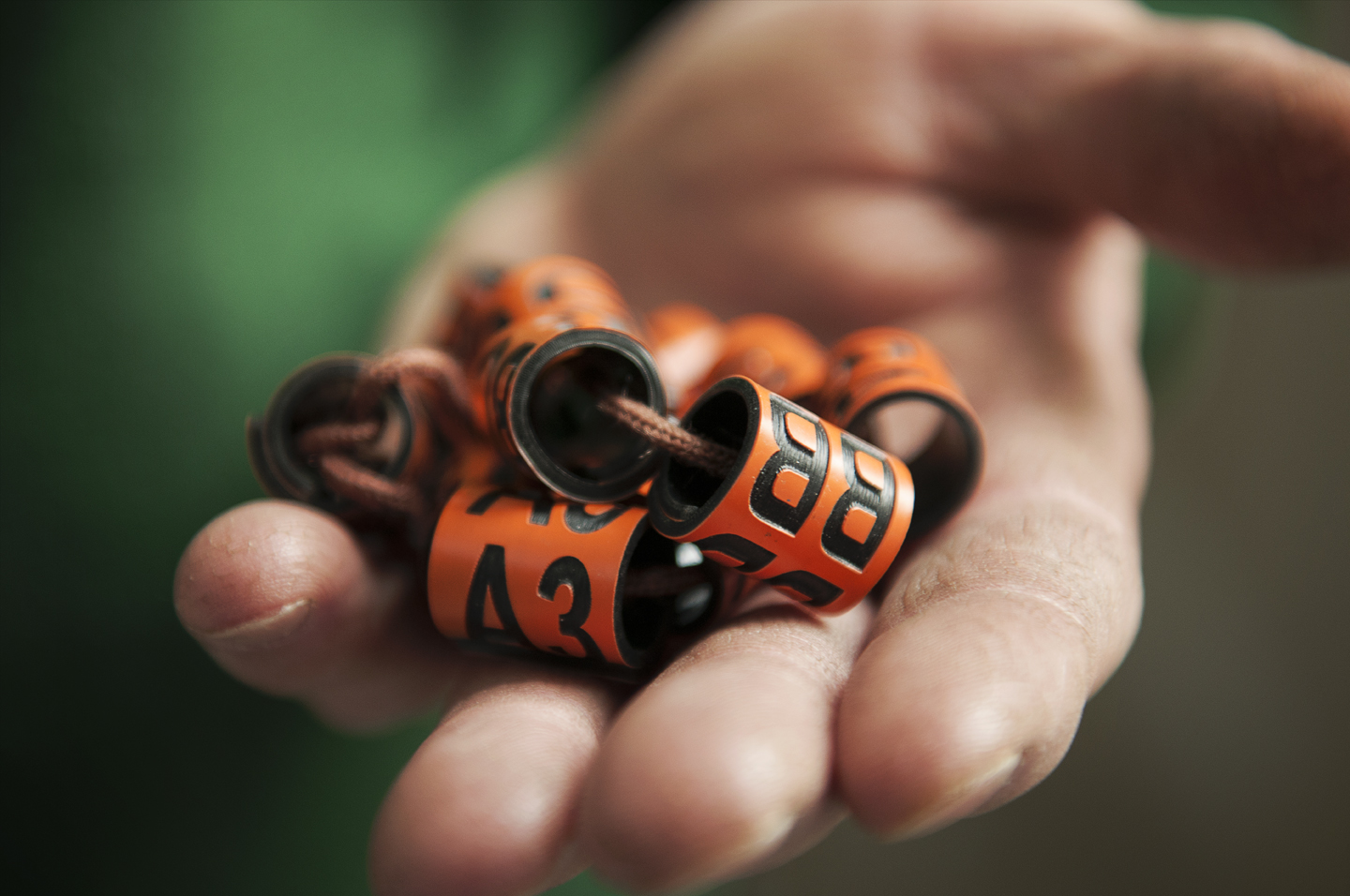
Colour ringing of nestlings aids identification from a distance. This scheme is providing valuable scientific data
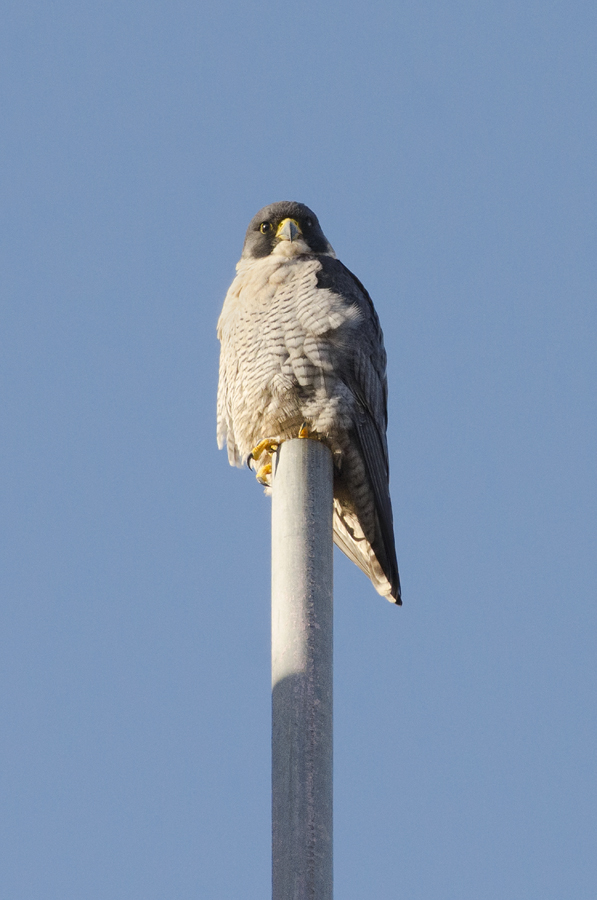
The female takes care of the bulk of brooding the eggs and young nestlings, while the male watches out for prey and intruding peregrines

If he spots a potential target, rival, or threat he is ready to take to the air and can quickly reach remarkable speeds
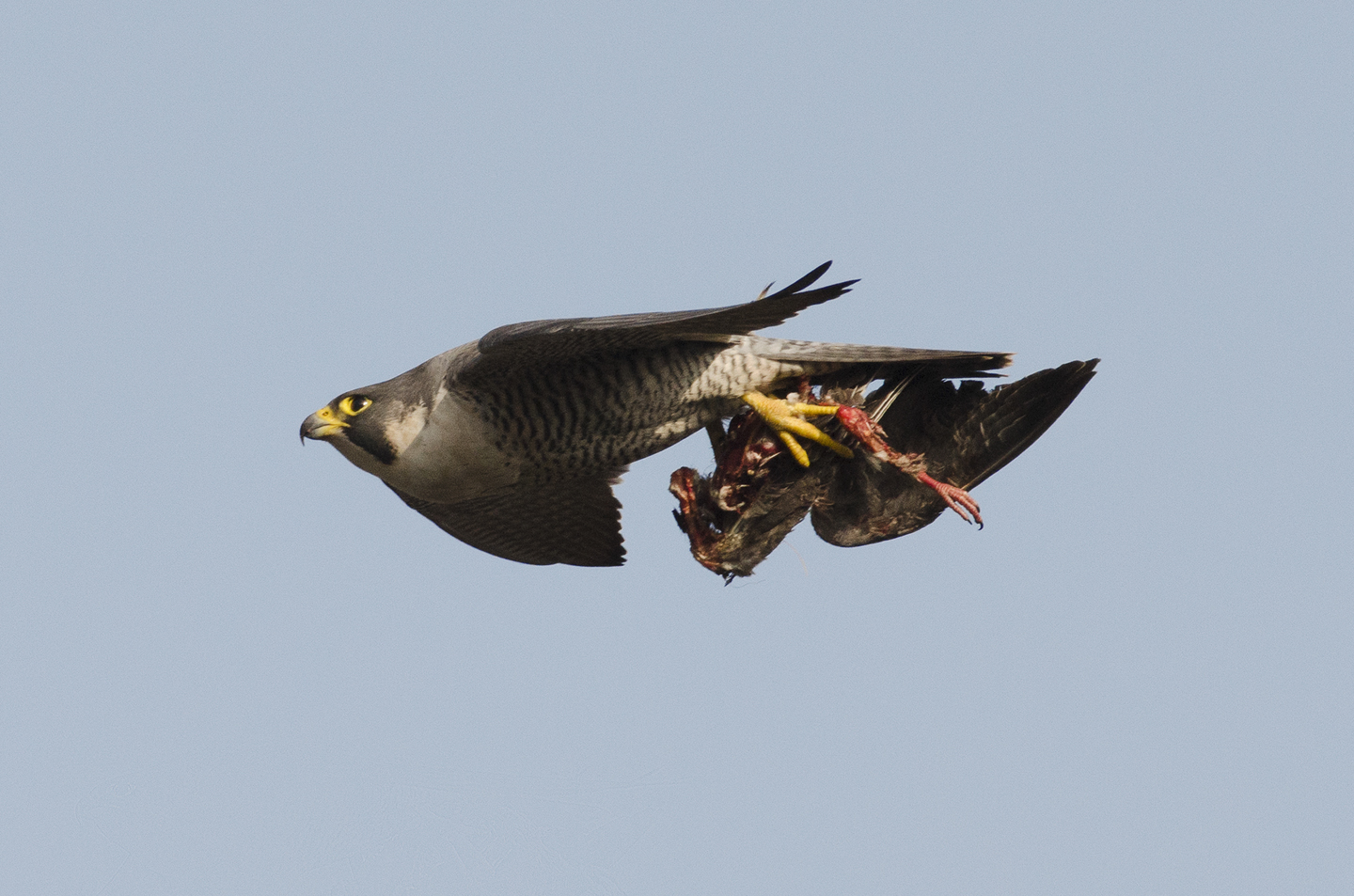
The feral pigeon is an important prey species for the urban peregrine, but only makes up around 50% of its diet. In Autumn and Winter that can drop to less than a third
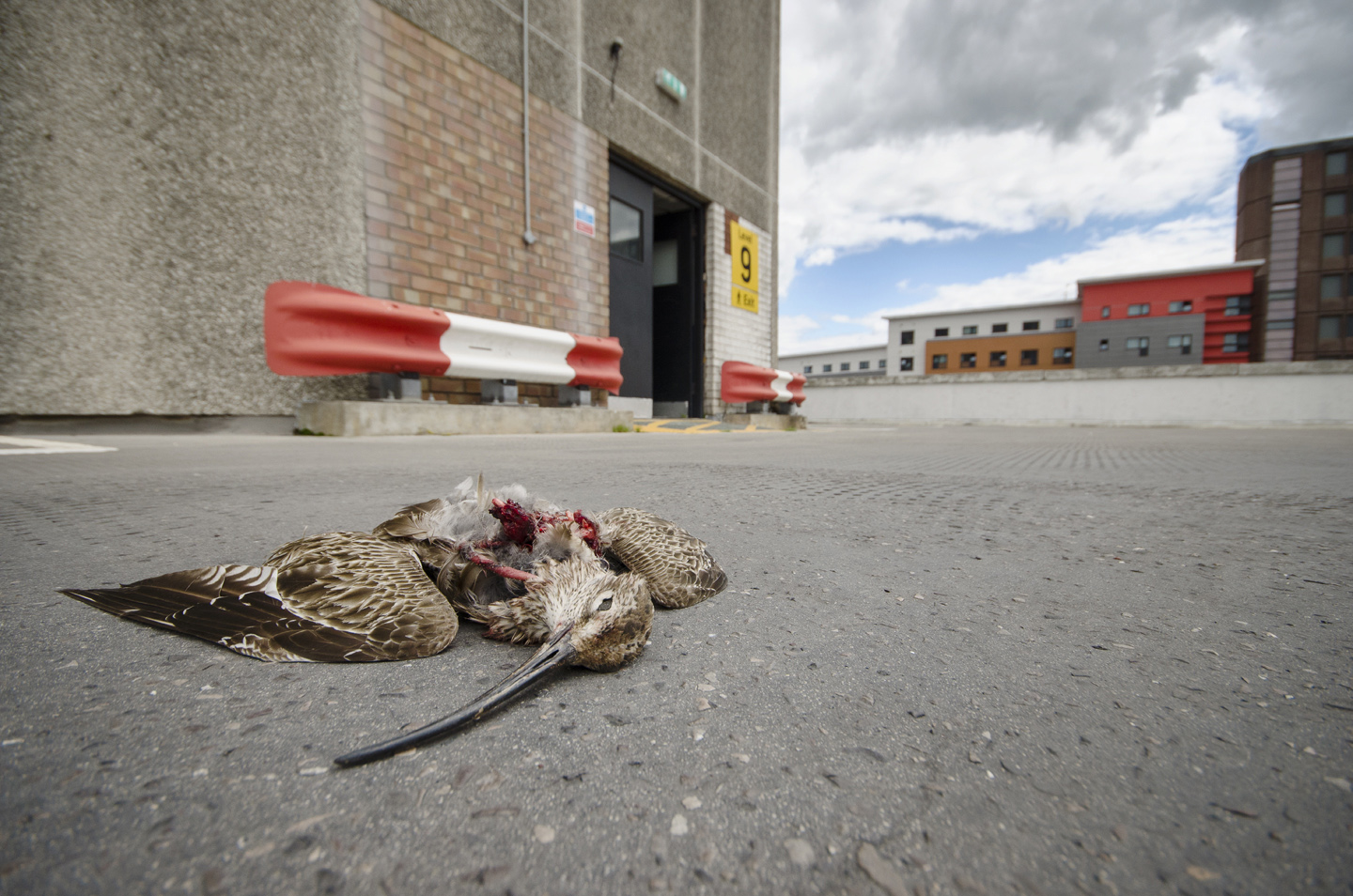
During peak migration times, wading birds like this whimbrel and ducks can perhaps unexpectedly make up the bulk of an urban peregrines diet
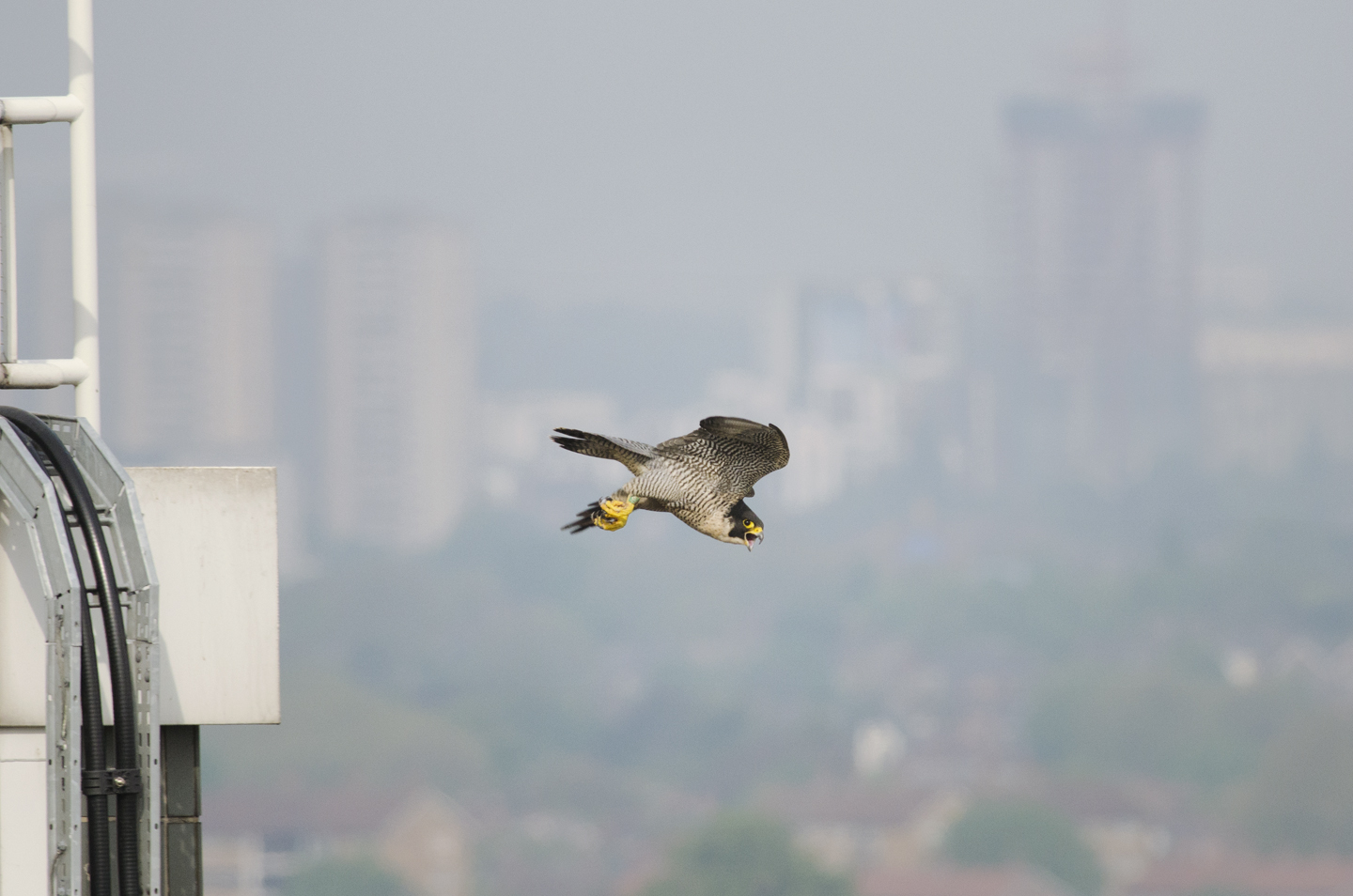
The artificial lights from buildings and street-lamps create a glow, which the peregrines use to hunt migrants on passage under the cover of darkness, oblivious to the dangers below
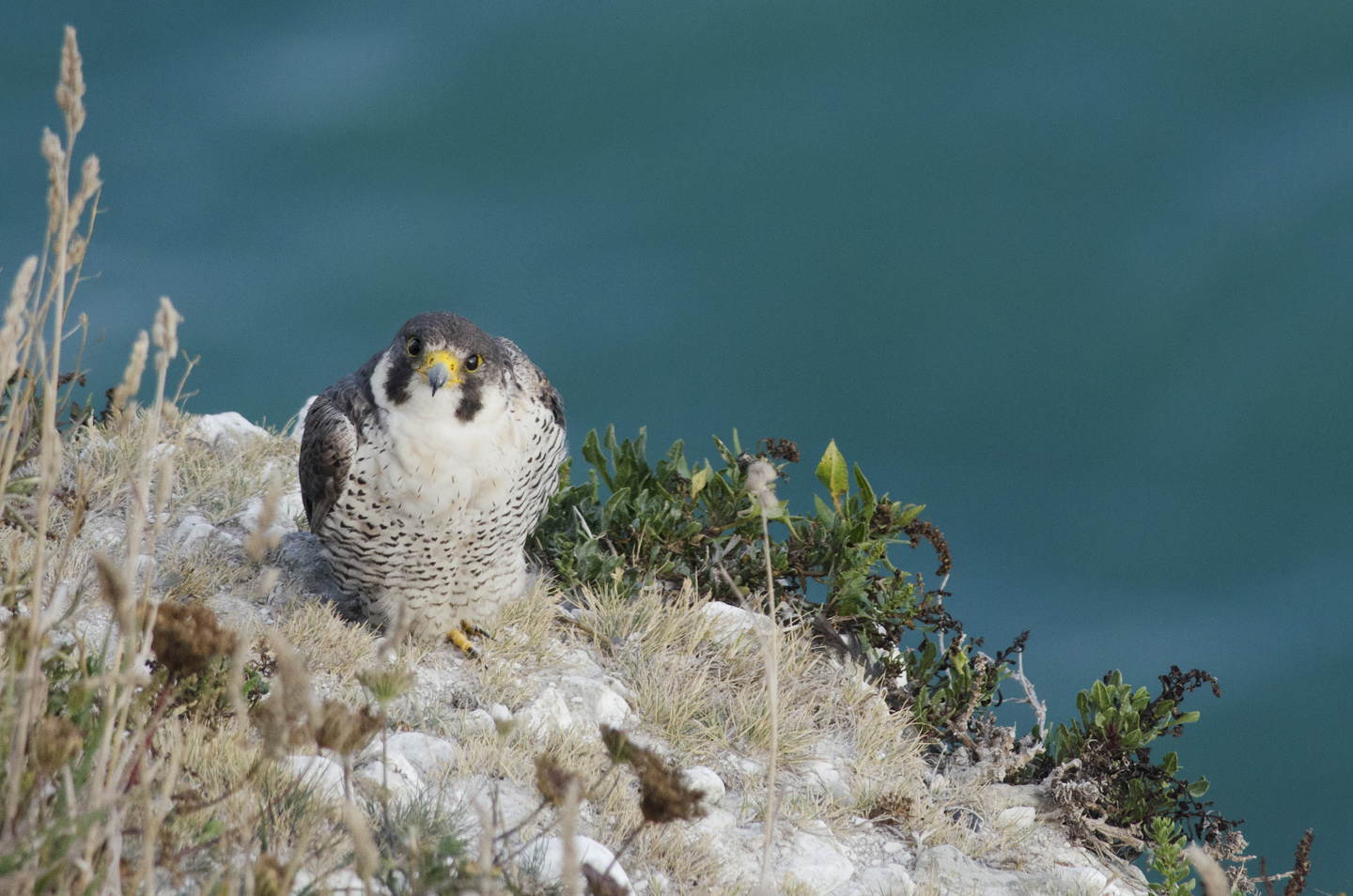
Coastal peregrines will often stay close to busy sea-ports like this one on the white cliffs near Dover, ostensibly for the pigeons, but perhaps more likely for the added light to hunt nocturnally
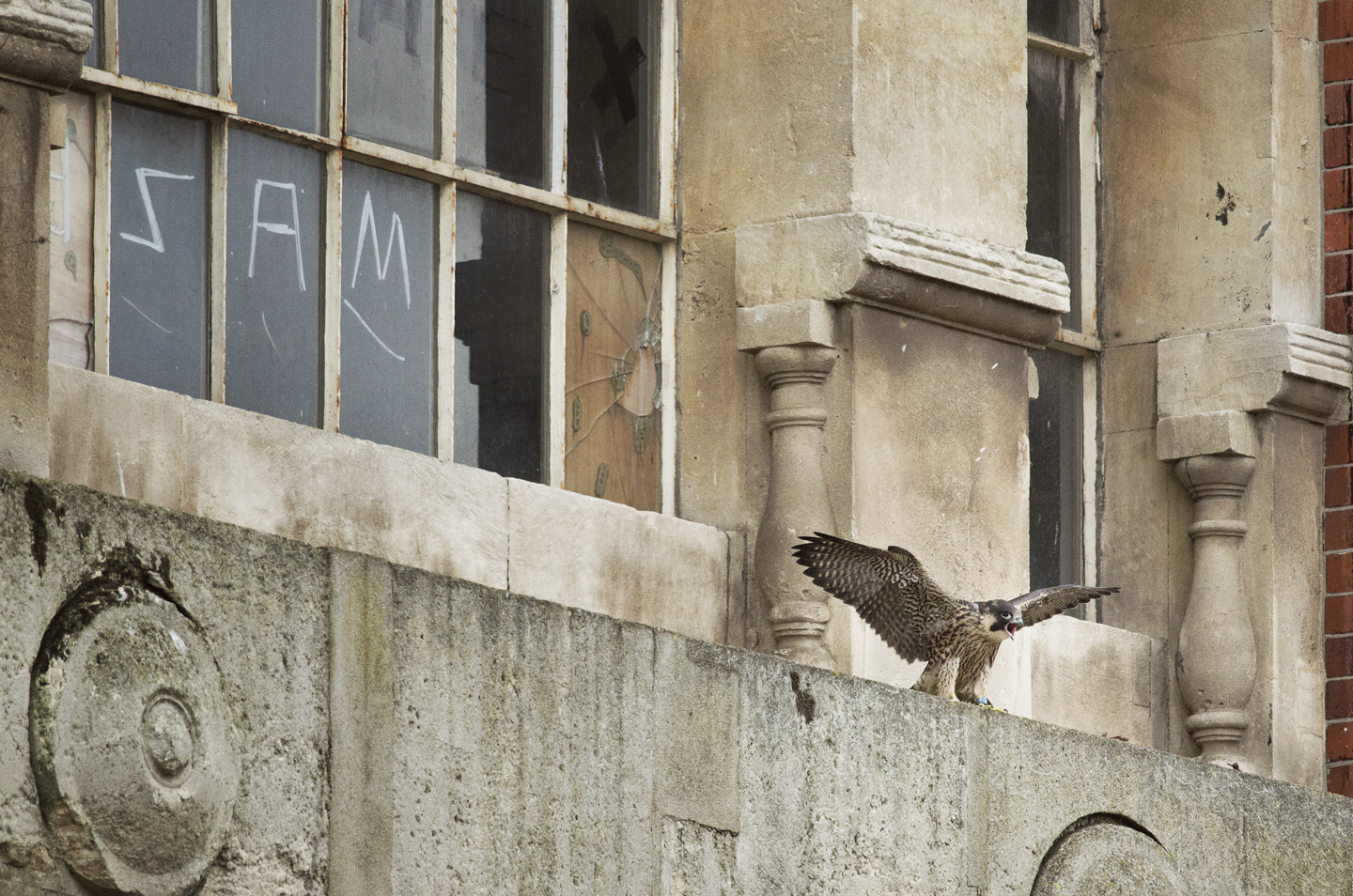
As the year progresses, the nestlings prepare for fledging by stretching and wing-flapping to strengthen their wing muscles
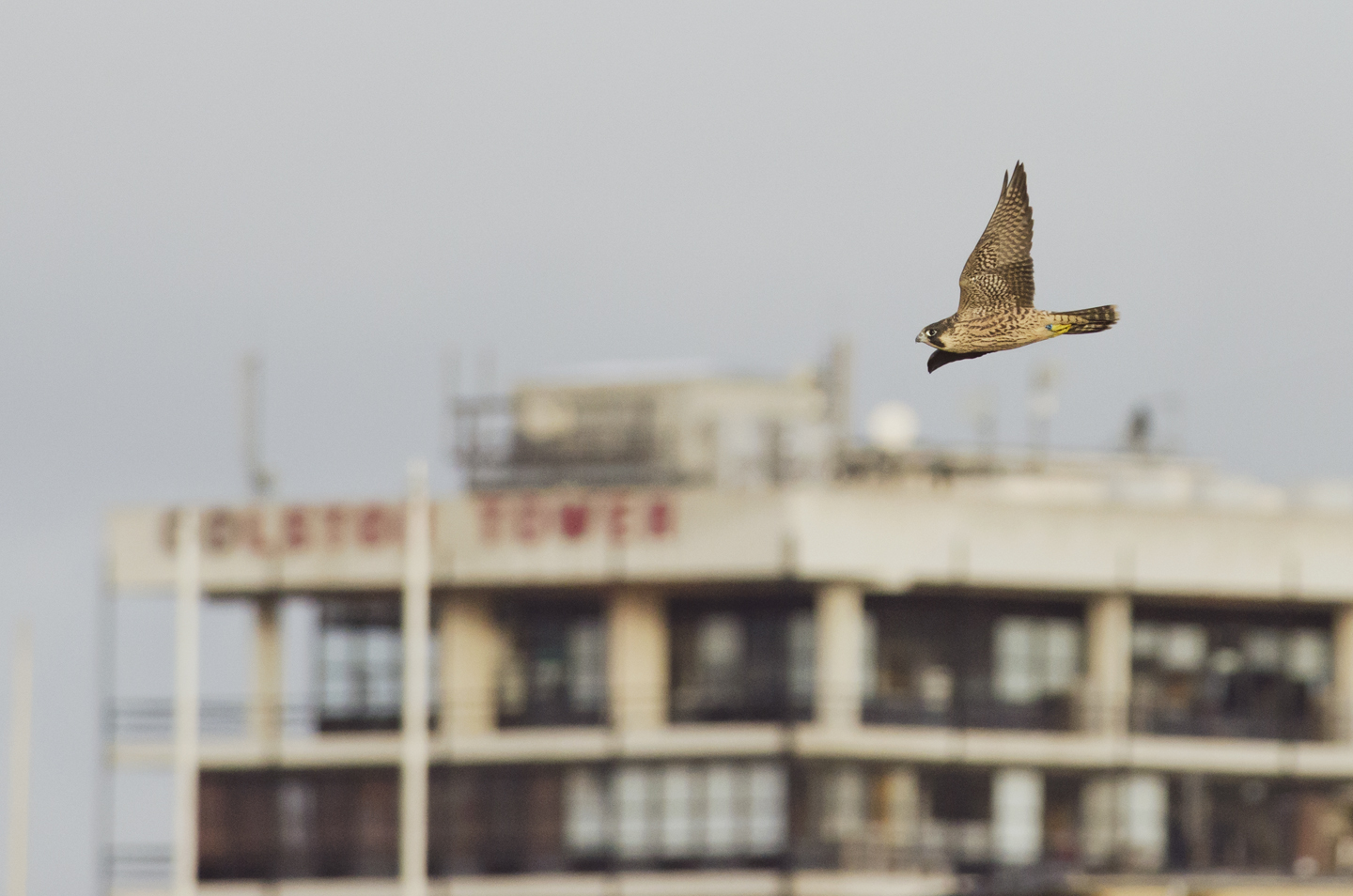
Their first flights are often short and less than graceful, but before long they are soaring above the city skyline
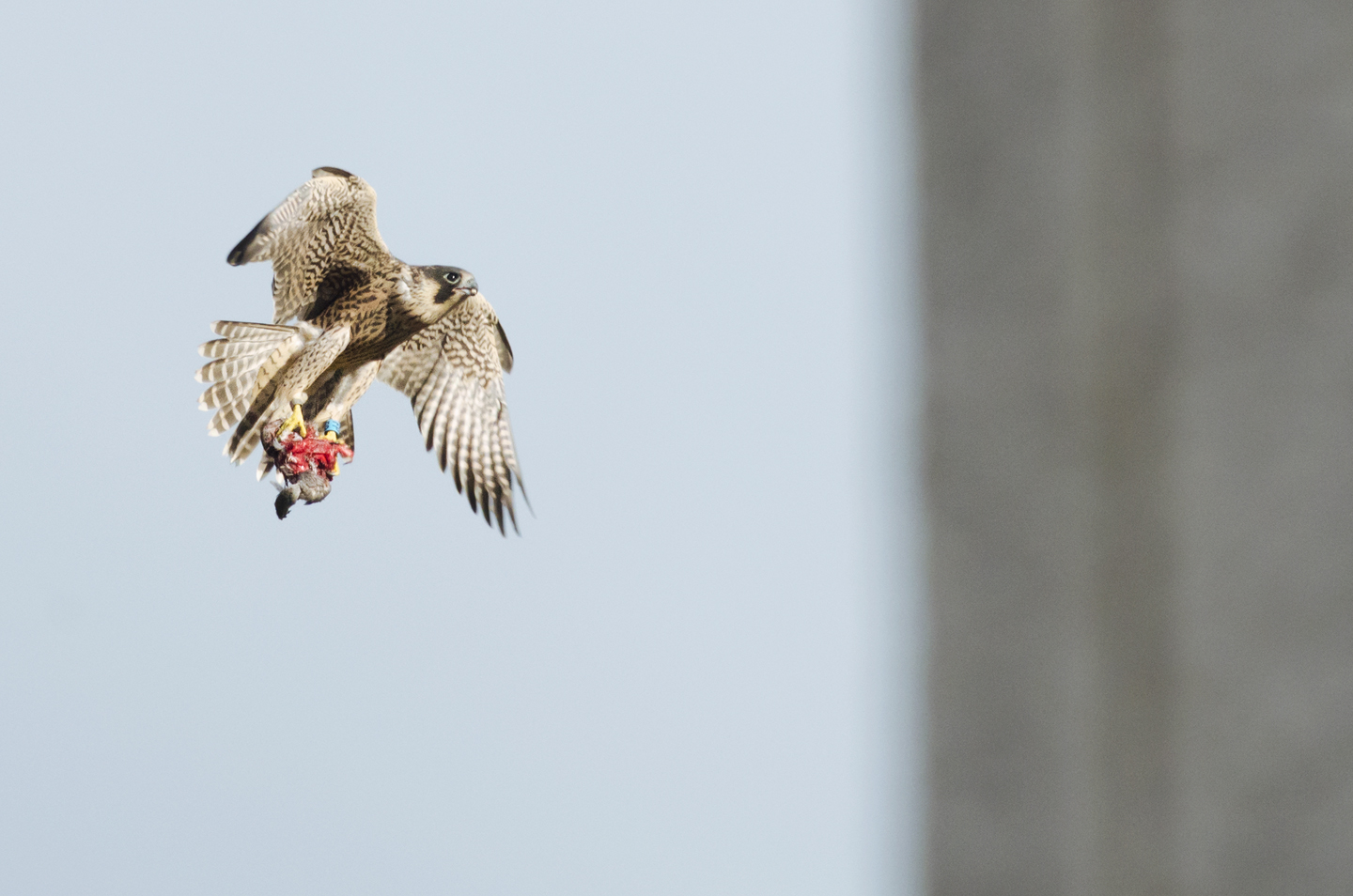
Juveniles can struggle to carry prey, even when butchered into small pieces by their parents, and will often drop it mid-flight
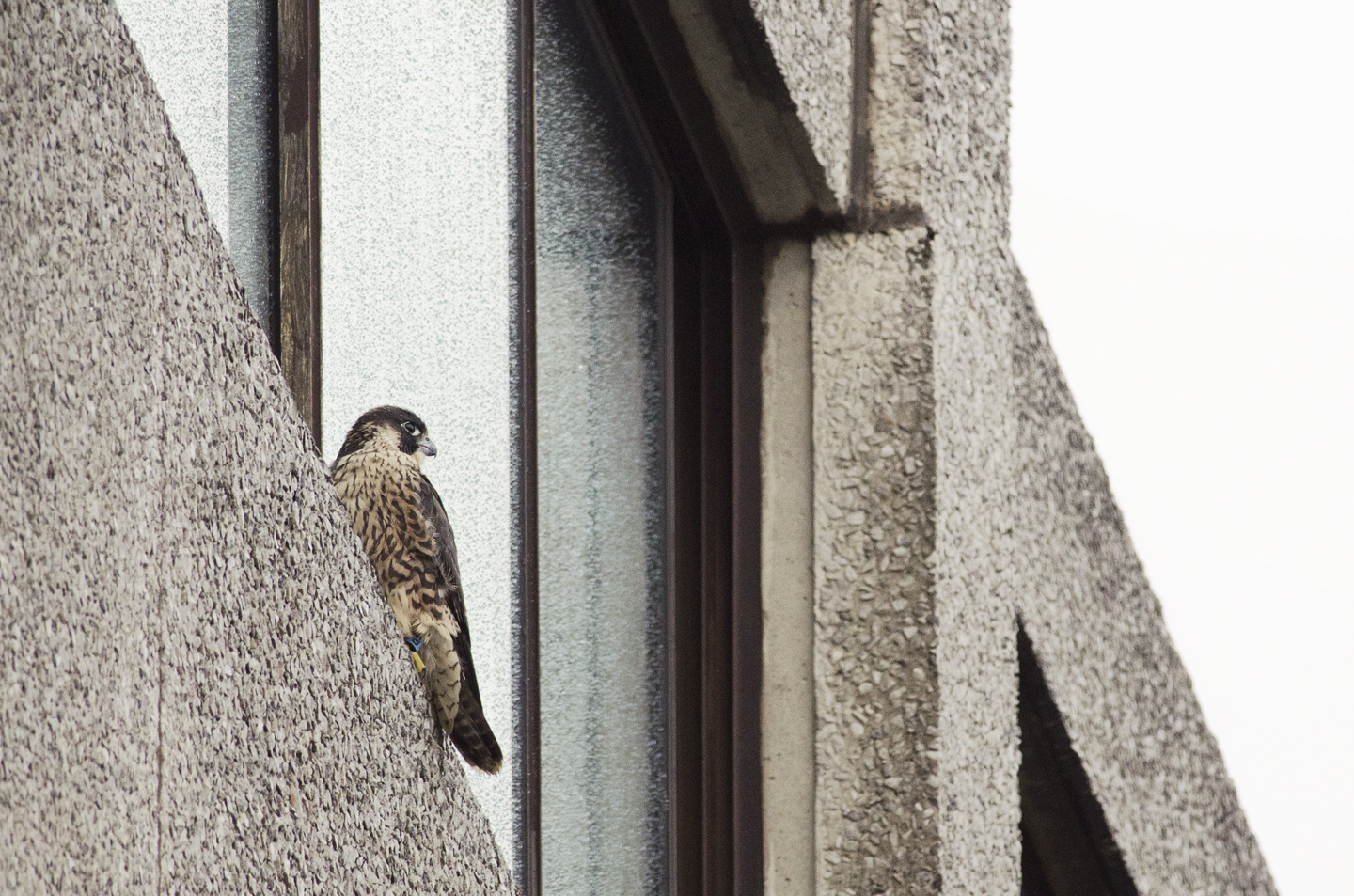
Juvenile peregrines blend in to the urban environment as well as they do a coastal cliff - the habitat is surprisingly similar, with its tall rocky outcrops inhabited by gulls and pigeons
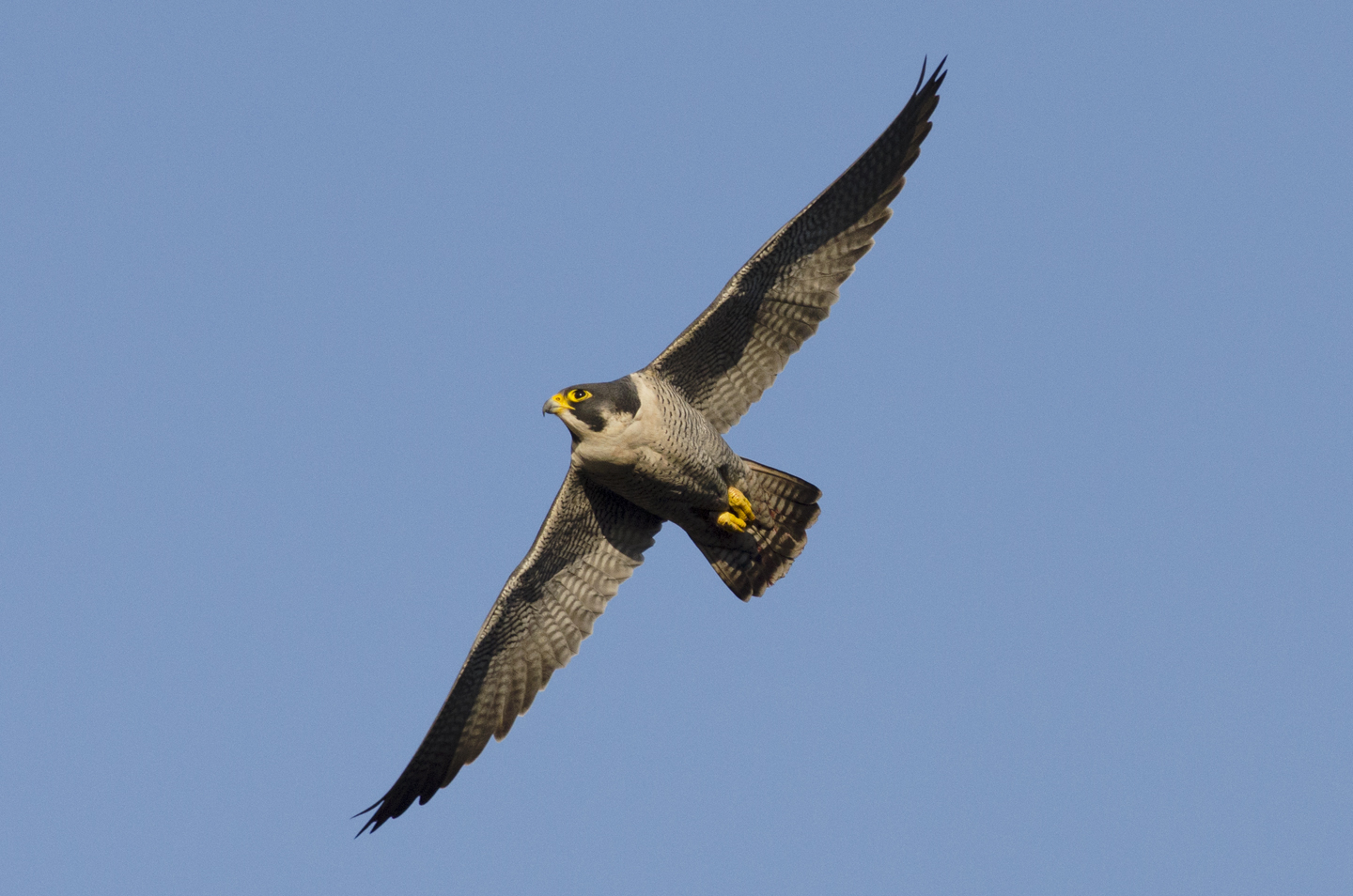
In a few short years, they reach maturity - a fully grown killing machine, with bright yellow features shining out against their beautiful black and white plumage
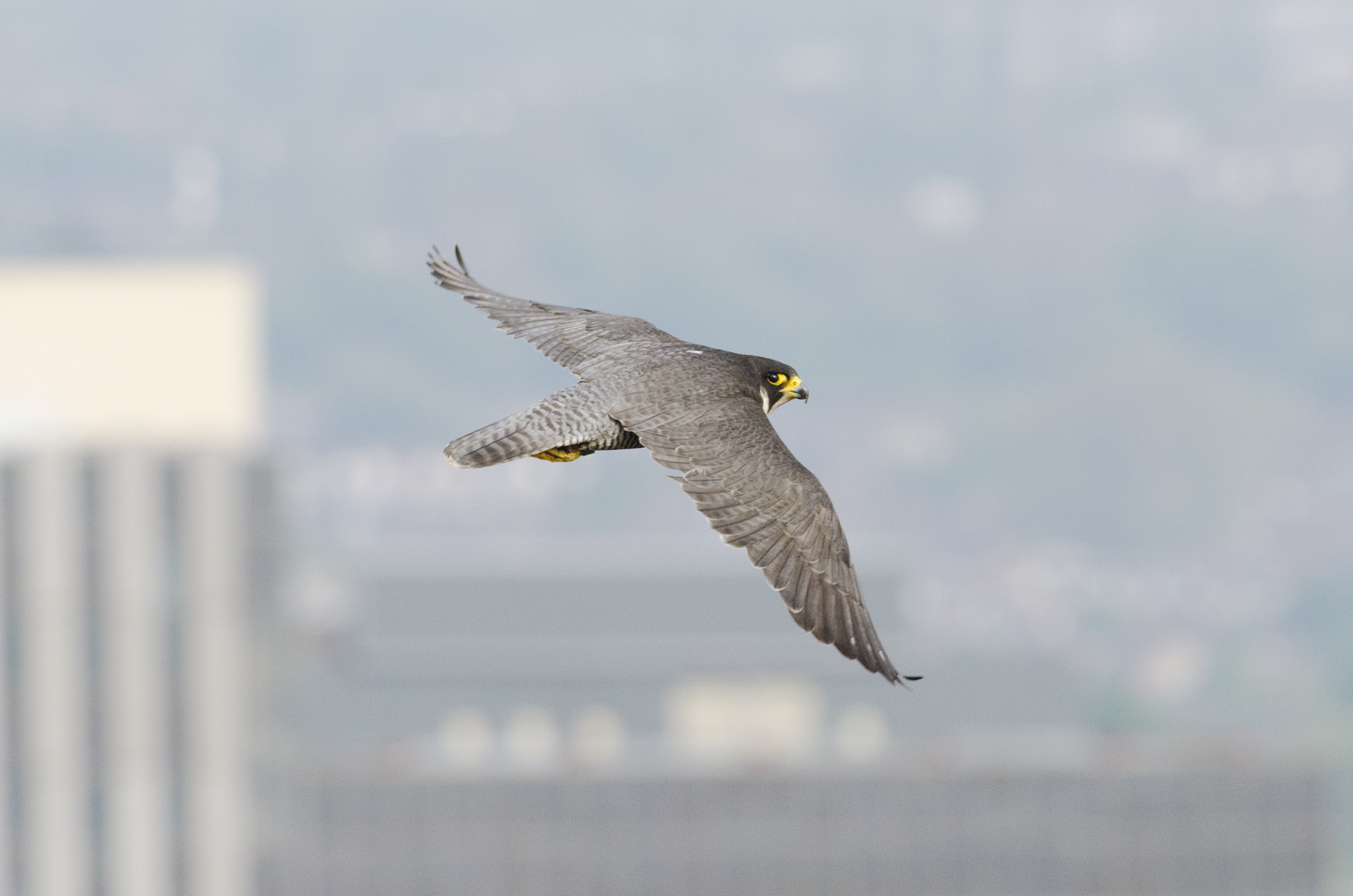
Long pointed wings, powerful shoulders and a hooked bill, they are formidable and ready to find territories of their own
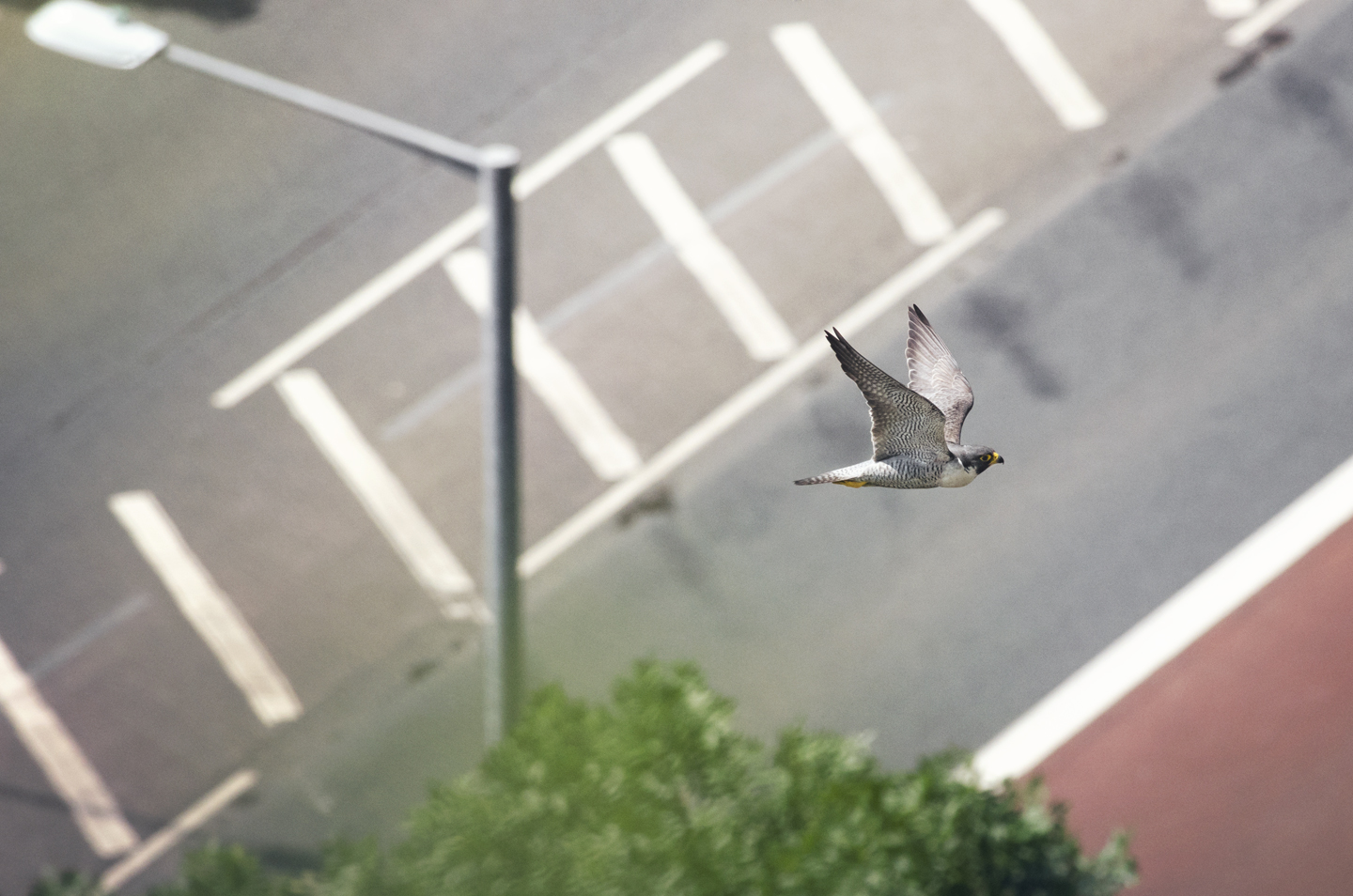
Territories in towns and cities are rising steadily - the sight of a peregrine cutting through the man-made landscape is becoming increasingly familiar
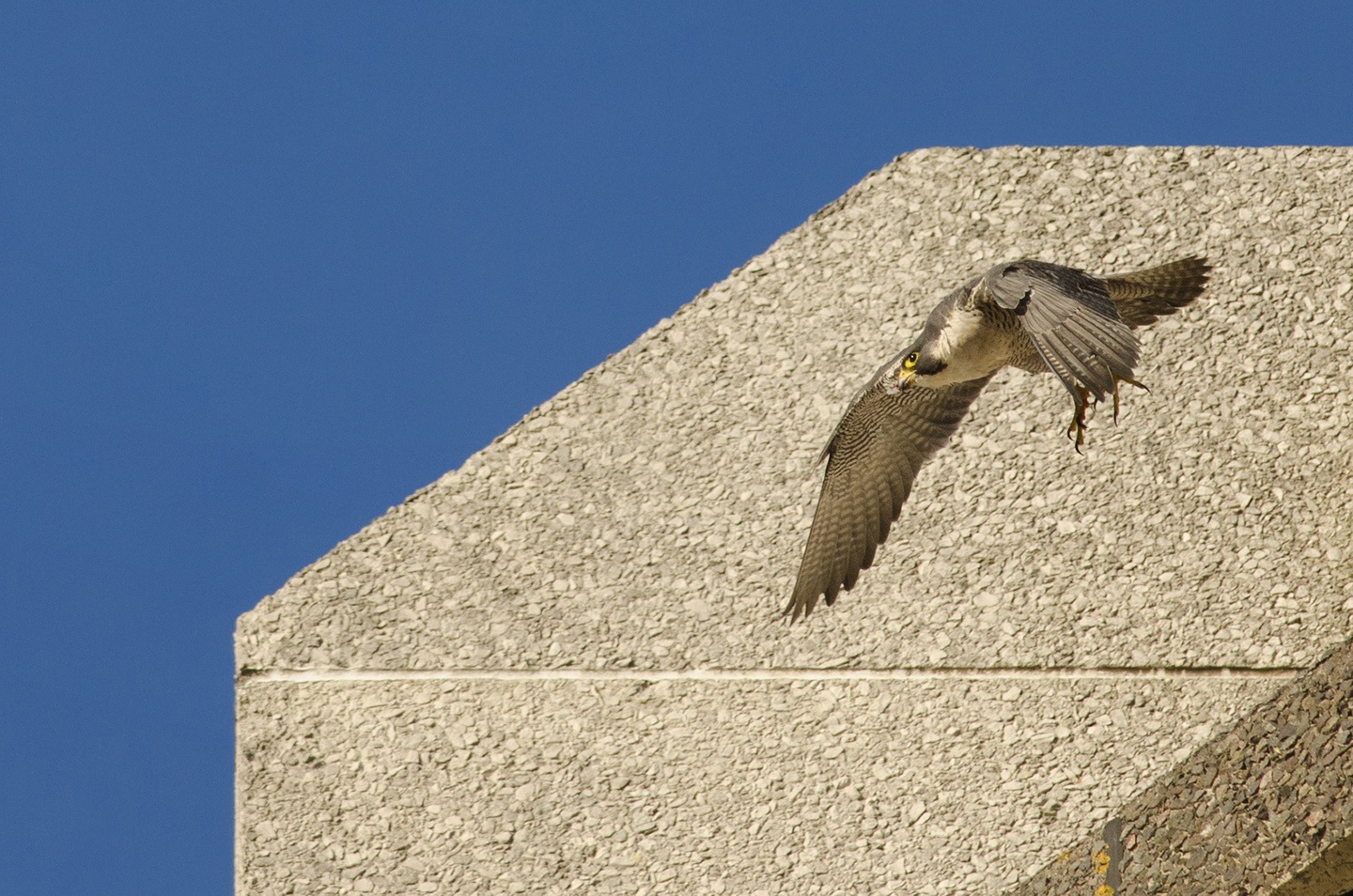
The stark man-made environment is now their stronghold. Cities can act as source populations, helping numbers to increase
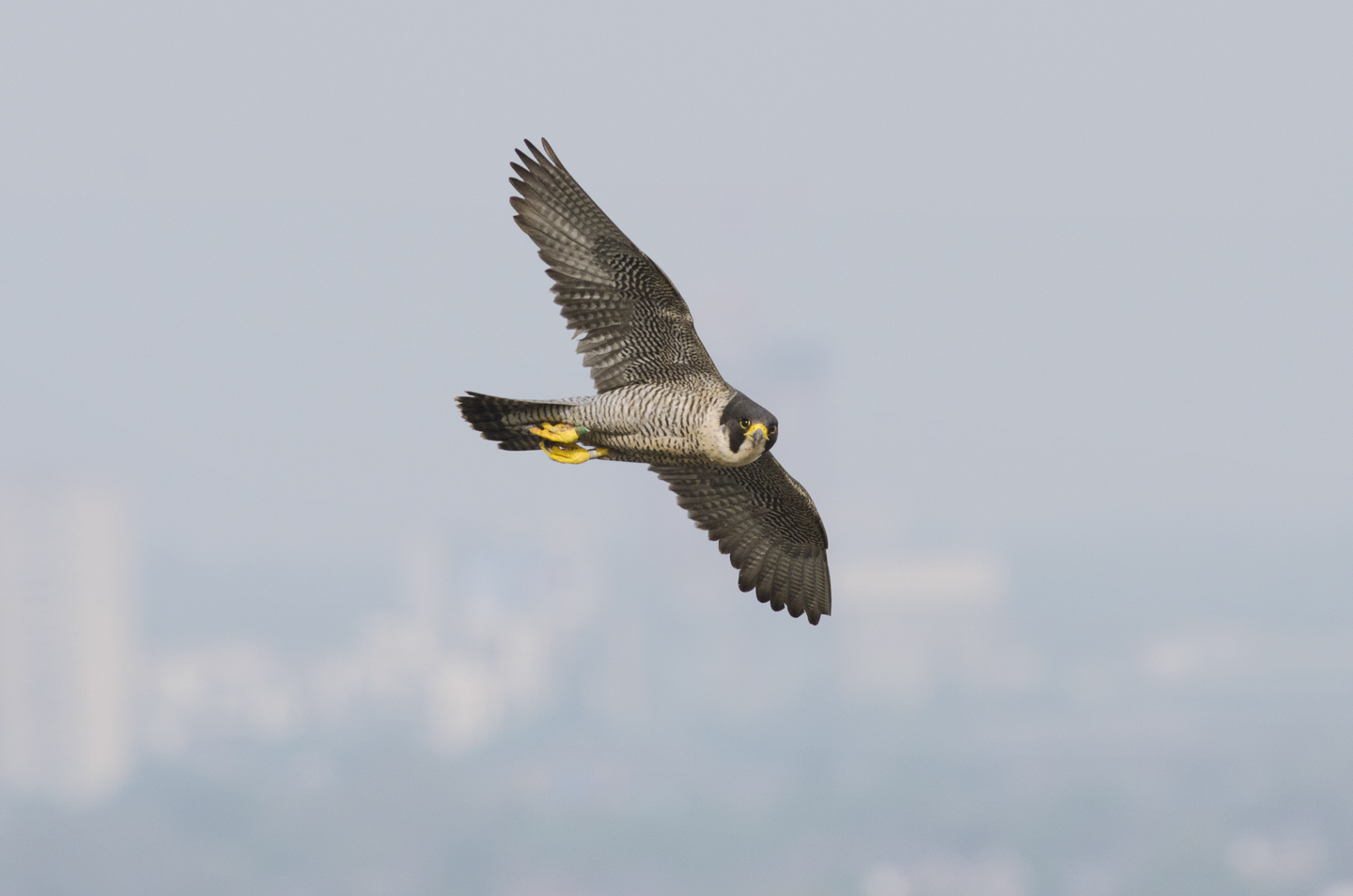
This has started to happen most noticeably in the south of England, where there are now more peregrines than ever before
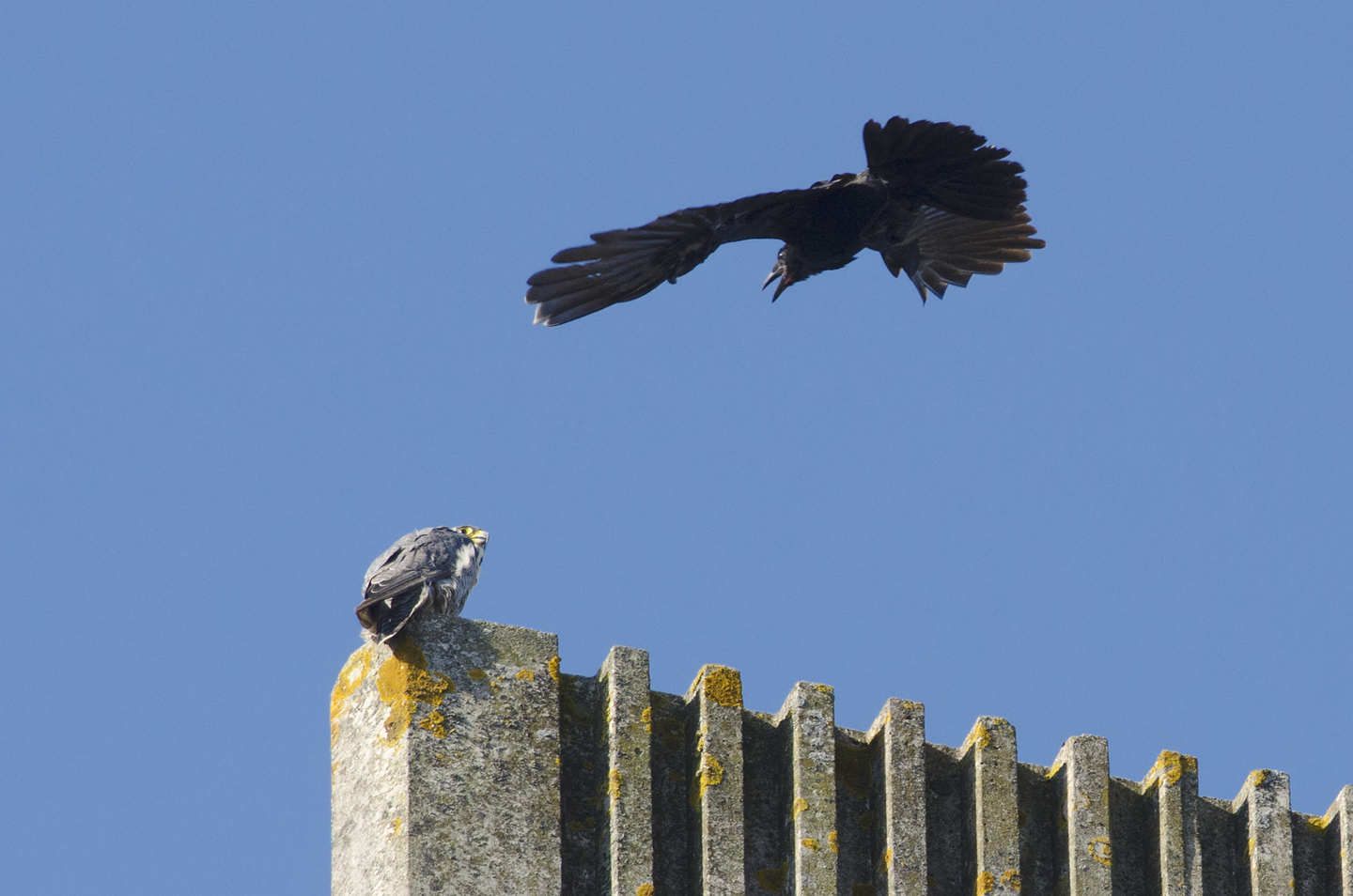
An increase in accessibility and familiarity has given us a glimpse into the daily trials and tribulations they face
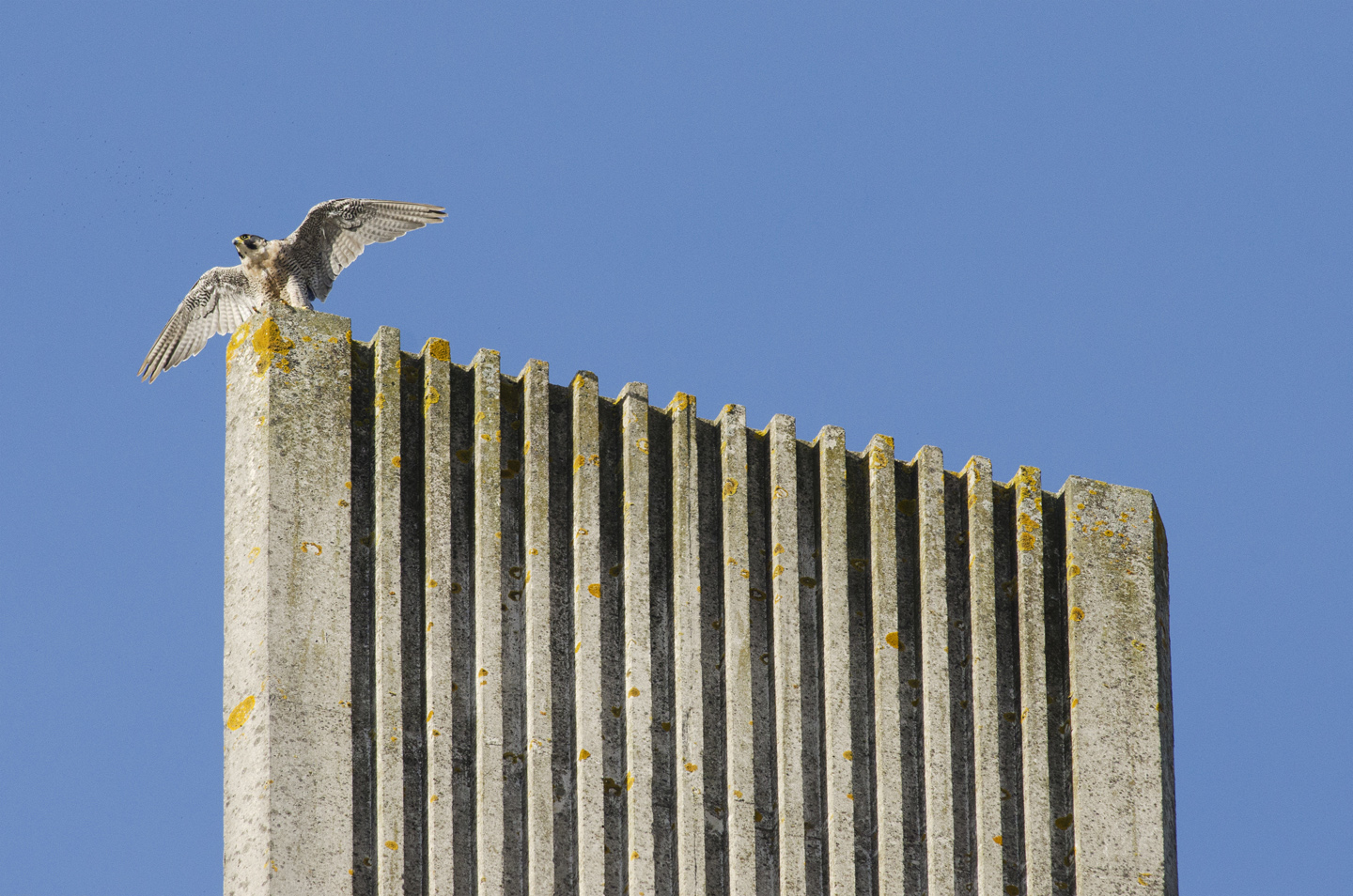
But although they have become an icon of the urban landscape in the south, it is not all good news and in parts of northern England, Wales and Scotland, numbers are still declining
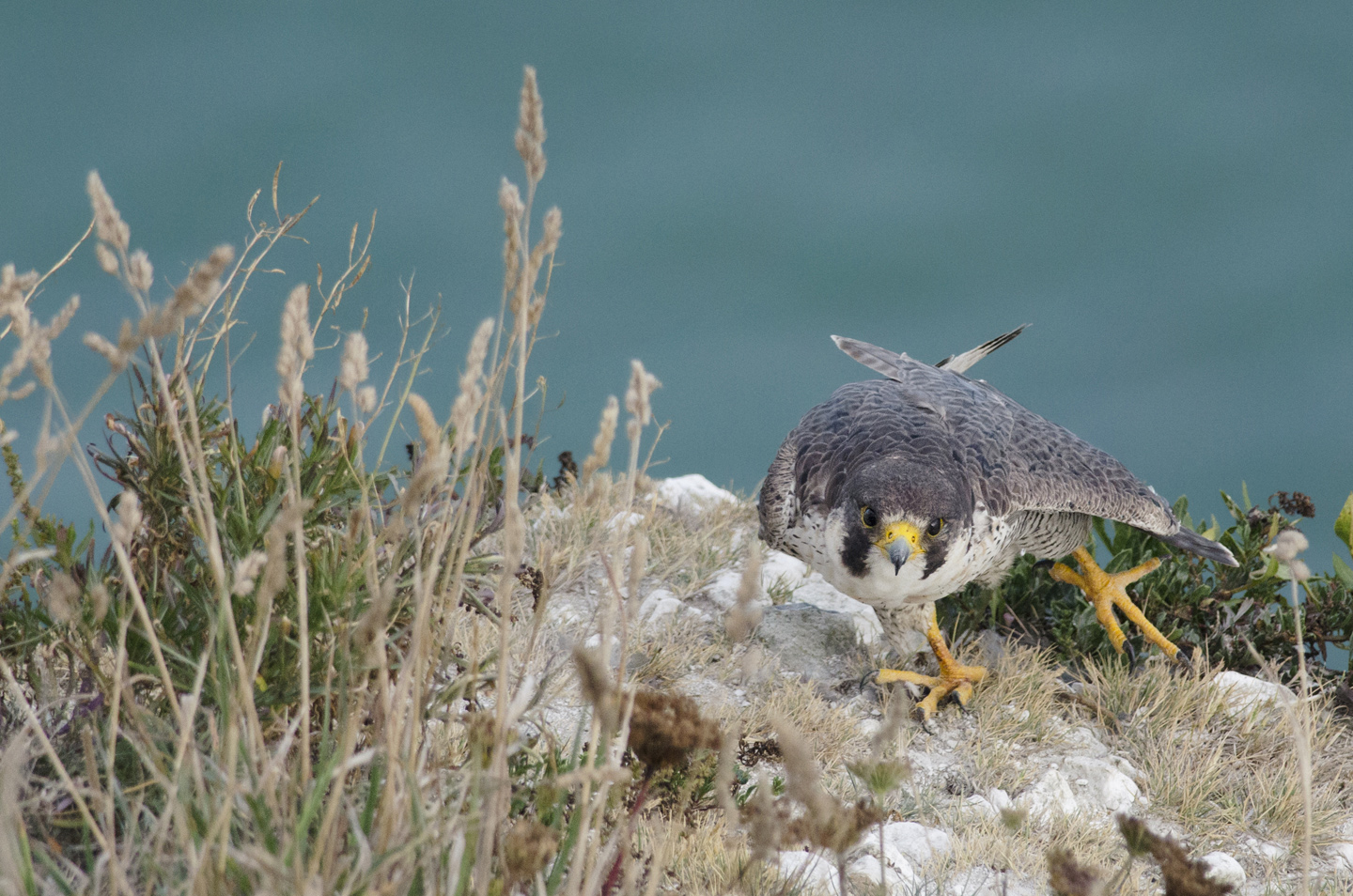
Coastal and rural peregrines are still at risk from persecution, particularly in the north of England, where the small game shooting industry is prevalent
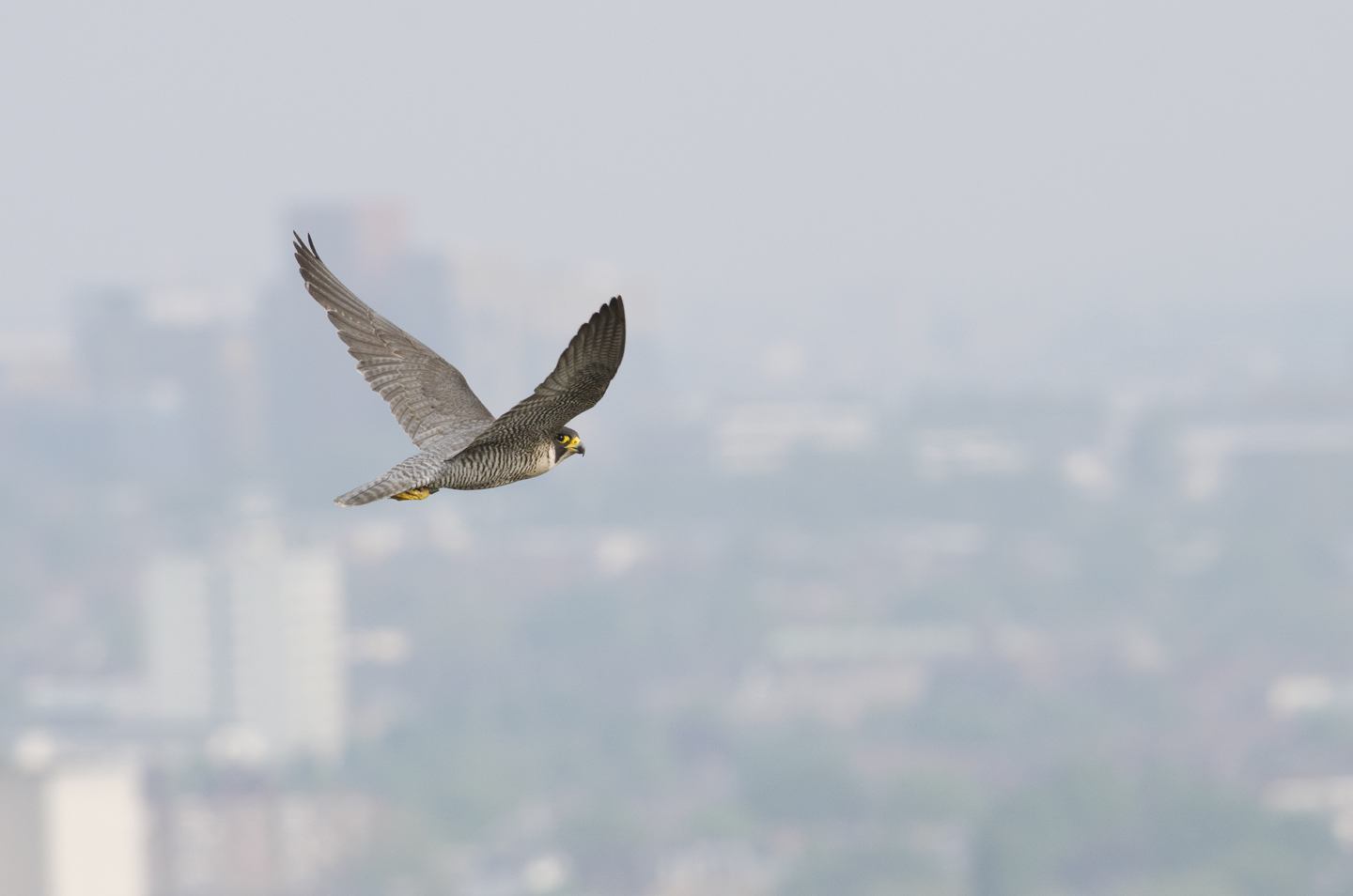
Peregrines are not entirely free from persecution in cities and pigeon fanciers can occasionally be a problem, but they are comparatively safe and an increase in numbers has meant an increase in understanding
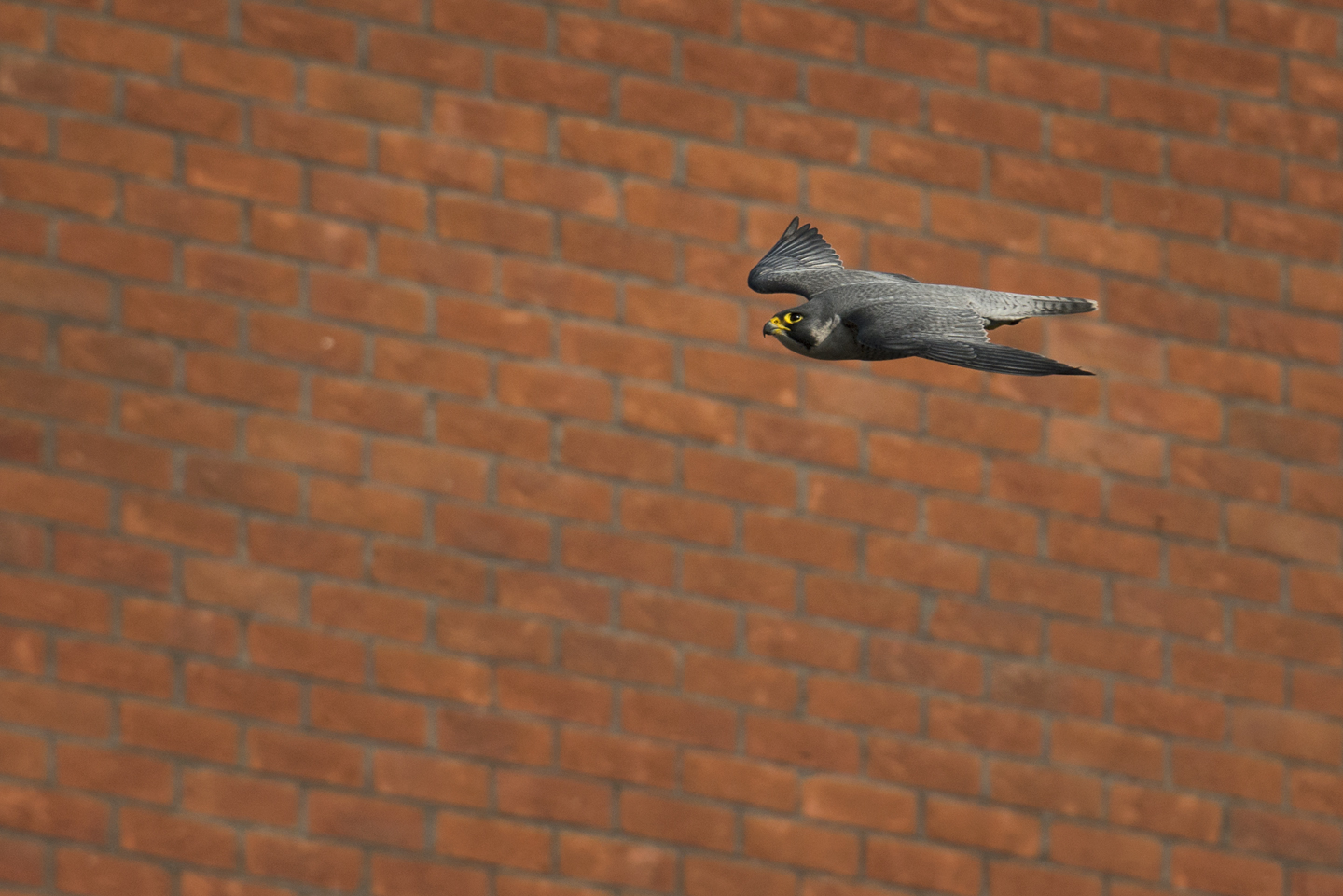
Sharing our towns and cities with peregrines is helping to change public attitudes towards raptors for the better and for now, it looks like urban peregrines are here to stay




































The peregrine falcon. Ruthless killer, graceful aerial acrobat and fastest creature on the planet
In recent years, these powerful falcons have become one of the UK's greatest urban wildlife success stories
Recovering from under 400 pairs in the 1960s to well over 1500 today, peregrines have made a come-back and are giving us better and closer views than ever before
In the city, where they are less fearful of man, we can even witness dramatic natural behaviour at close quarters like this clash between 2 juvenile siblings
Clumsy fledglings can turn up in unexpected places, like this cliff-top above a busy main road
And some become grounded and need help back up to rooftop safety
Tall city structures replace crag and cliff and now peregrines are just as comfortable patrolling our urban skies
Young falcons make their first flights and catch their first pigeons in the city - to them it's home and they know no different
They can develop and learn to hunt in relative safety, where they have a year round supply of feral pigeons to play with
The peregrine, or "wandering" falcon is no longer a nomad, preferring to hold its territory year round, come rain or shine
The year starts with flight displays by the tiercel to impress the female. Flight and ledge displays, prey-transfers and other courtship rituals are important in pair bonding
Once the tiercel has proved he is a proficient hunter and can provide for the family, the falcon accepts him and they may stay together for many years
Throughout the Spring they mate many times, partly as pair bonding and usually around their chosen nesting ledge
Urban peregrines often nest near rivers as they are natural conduits for birds on the move and it pays to to make the most of this regular source of food
Urban and suburban peregrines can be much more easily monitored than their rural counterparts. The nestlings are ringed at around 3 weeks old
Colour ringing of nestlings aids identification from a distance. This scheme is providing valuable scientific data
The female takes care of the bulk of brooding the eggs and young nestlings, while the male watches out for prey and intruding peregrines
If he spots a potential target, rival, or threat he is ready to take to the air and can quickly reach remarkable speeds
The feral pigeon is an important prey species for the urban peregrine, but only makes up around 50% of its diet. In Autumn and Winter that can drop to less than a third
During peak migration times, wading birds like this whimbrel and ducks can perhaps unexpectedly make up the bulk of an urban peregrines diet
The artificial lights from buildings and street-lamps create a glow, which the peregrines use to hunt migrants on passage under the cover of darkness, oblivious to the dangers below
Coastal peregrines will often stay close to busy sea-ports like this one on the white cliffs near Dover, ostensibly for the pigeons, but perhaps more likely for the added light to hunt nocturnally
As the year progresses, the nestlings prepare for fledging by stretching and wing-flapping to strengthen their wing muscles
Their first flights are often short and less than graceful, but before long they are soaring above the city skyline
Juveniles can struggle to carry prey, even when butchered into small pieces by their parents, and will often drop it mid-flight
Juvenile peregrines blend in to the urban environment as well as they do a coastal cliff - the habitat is surprisingly similar, with its tall rocky outcrops inhabited by gulls and pigeons
In a few short years, they reach maturity - a fully grown killing machine, with bright yellow features shining out against their beautiful black and white plumage
Long pointed wings, powerful shoulders and a hooked bill, they are formidable and ready to find territories of their own
Territories in towns and cities are rising steadily - the sight of a peregrine cutting through the man-made landscape is becoming increasingly familiar
The stark man-made environment is now their stronghold. Cities can act as source populations, helping numbers to increase
This has started to happen most noticeably in the south of England, where there are now more peregrines than ever before
An increase in accessibility and familiarity has given us a glimpse into the daily trials and tribulations they face
But although they have become an icon of the urban landscape in the south, it is not all good news and in parts of northern England, Wales and Scotland, numbers are still declining
Coastal and rural peregrines are still at risk from persecution, particularly in the north of England, where the small game shooting industry is prevalent
Peregrines are not entirely free from persecution in cities and pigeon fanciers can occasionally be a problem, but they are comparatively safe and an increase in numbers has meant an increase in understanding
Sharing our towns and cities with peregrines is helping to change public attitudes towards raptors for the better and for now, it looks like urban peregrines are here to stay
